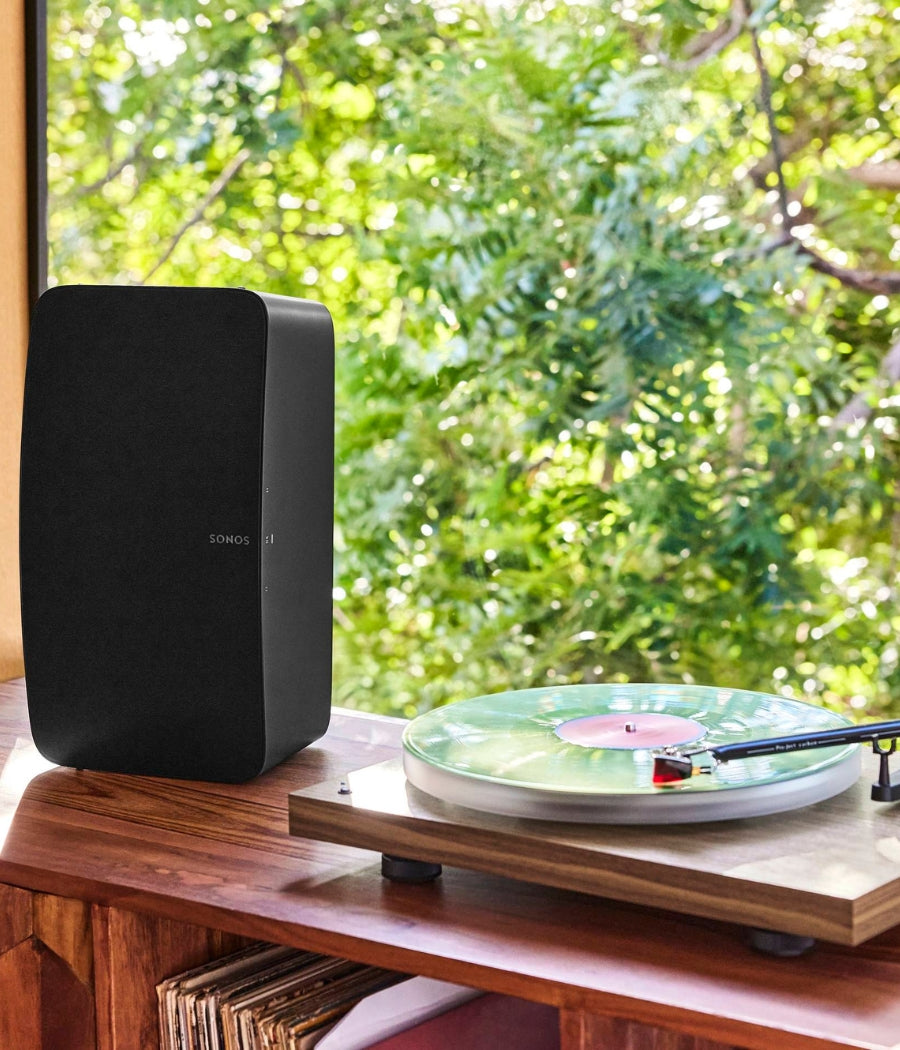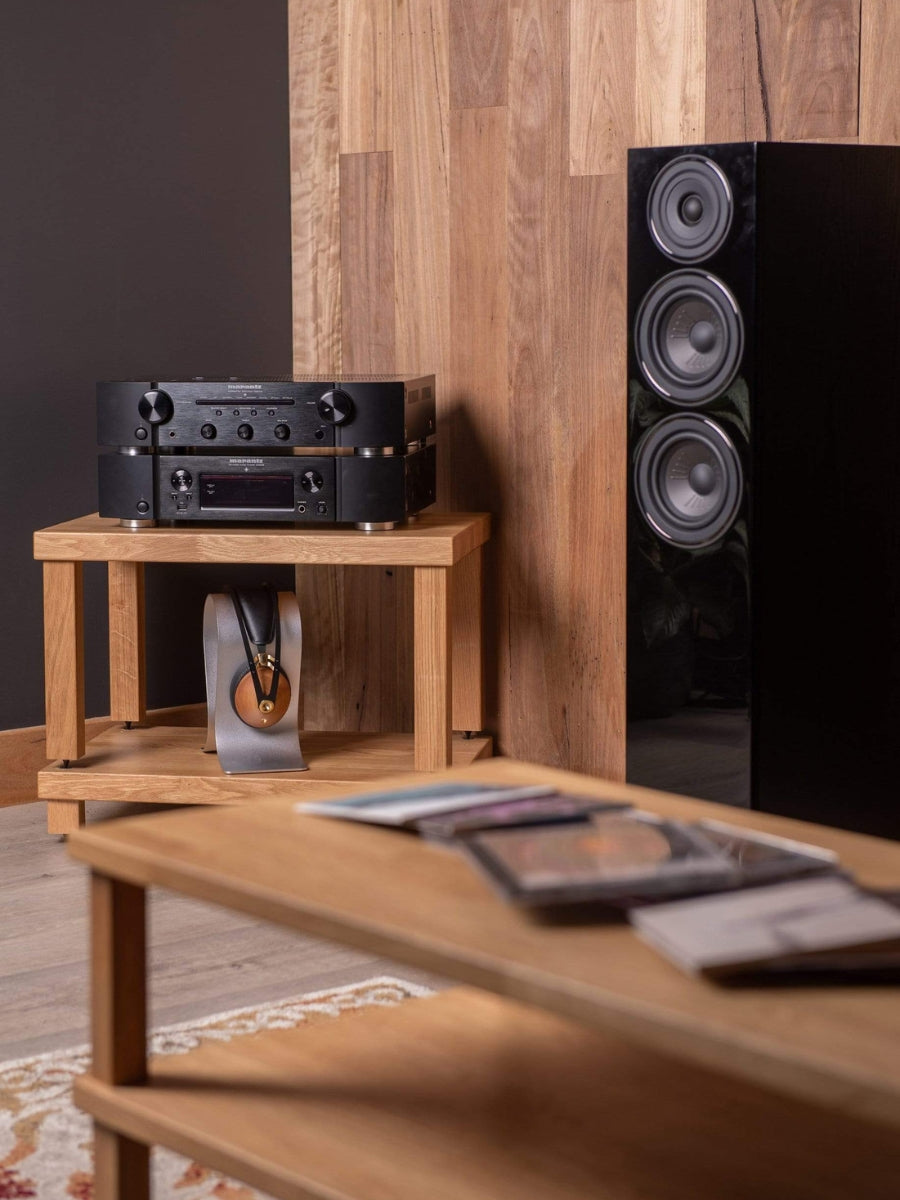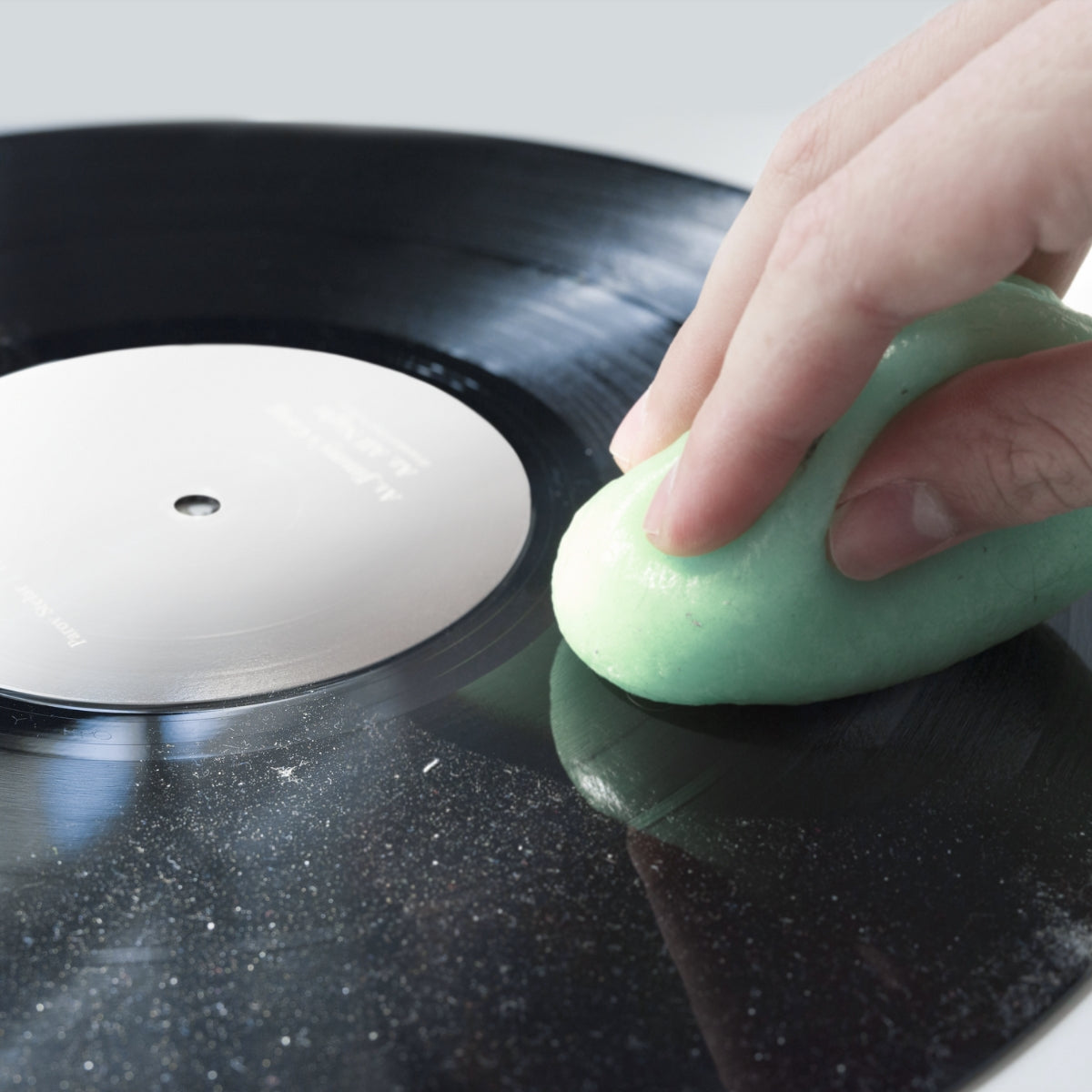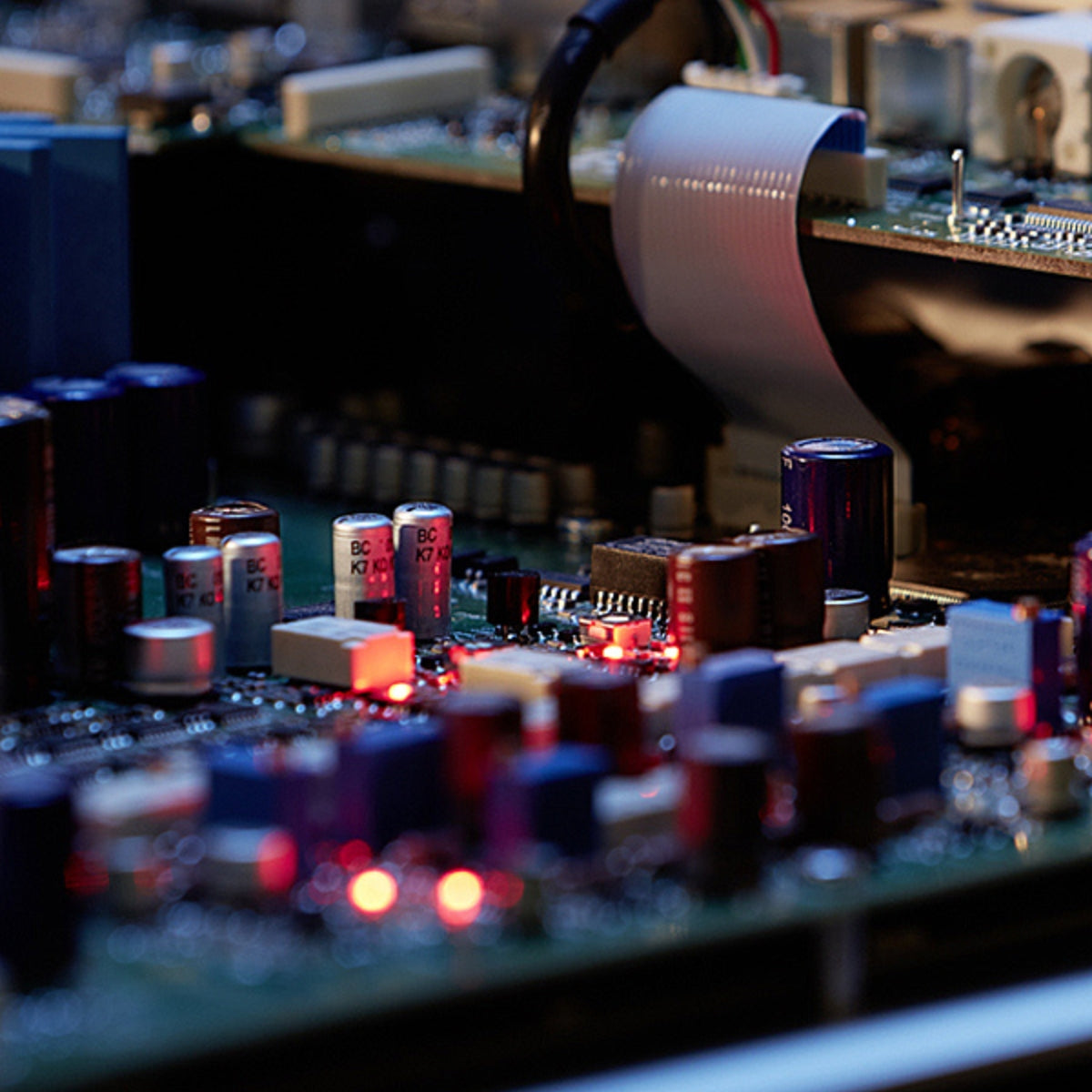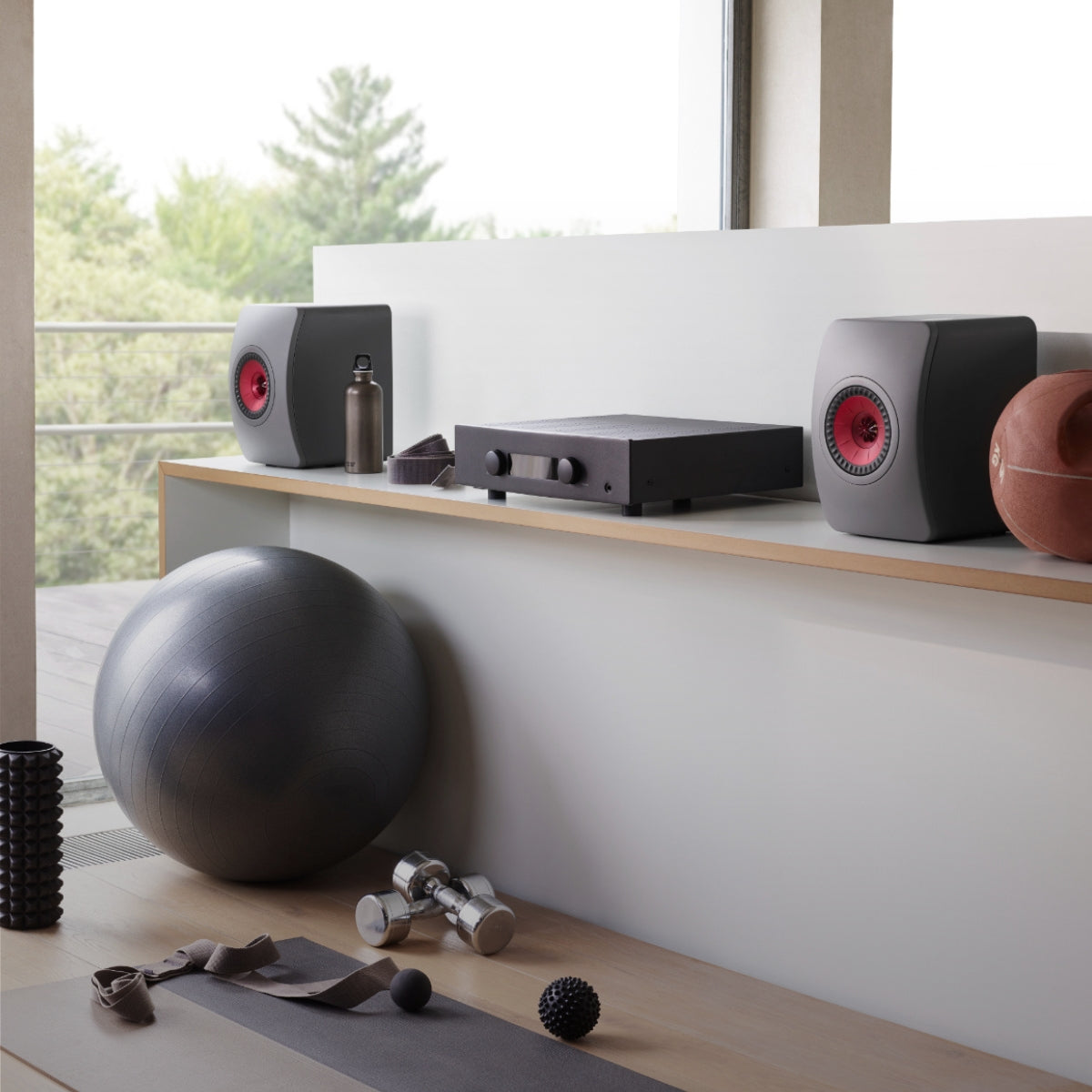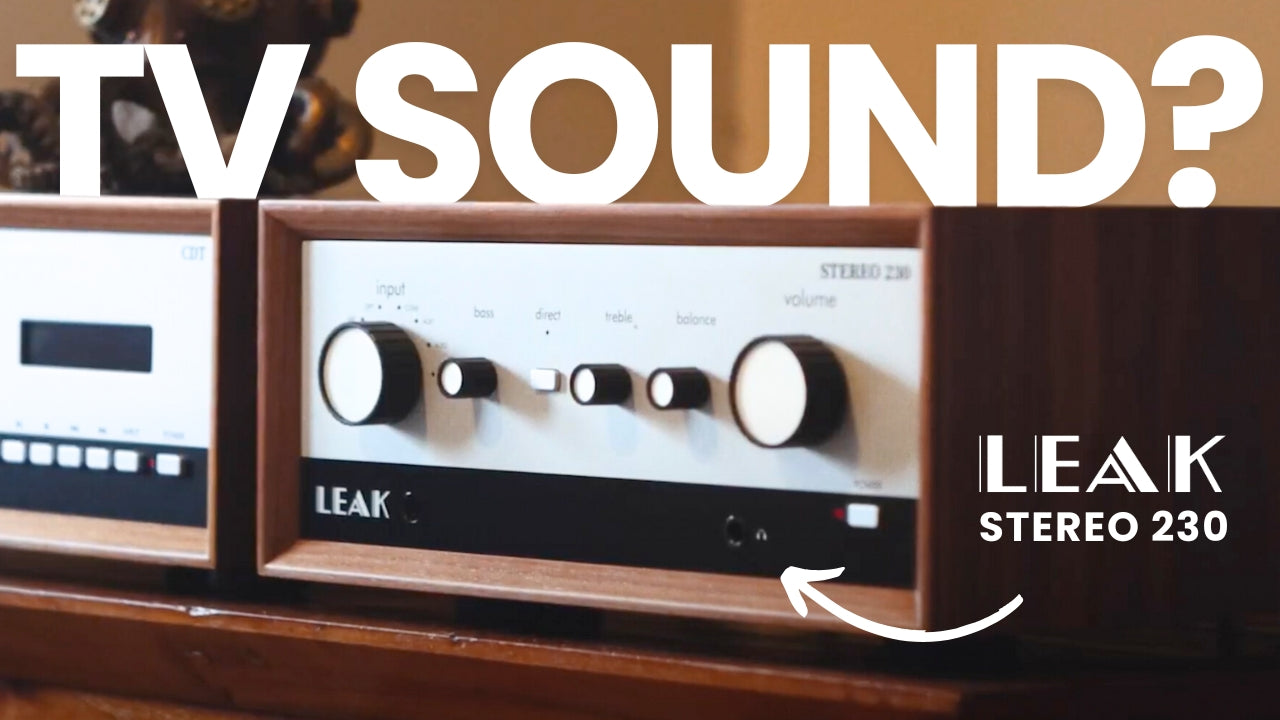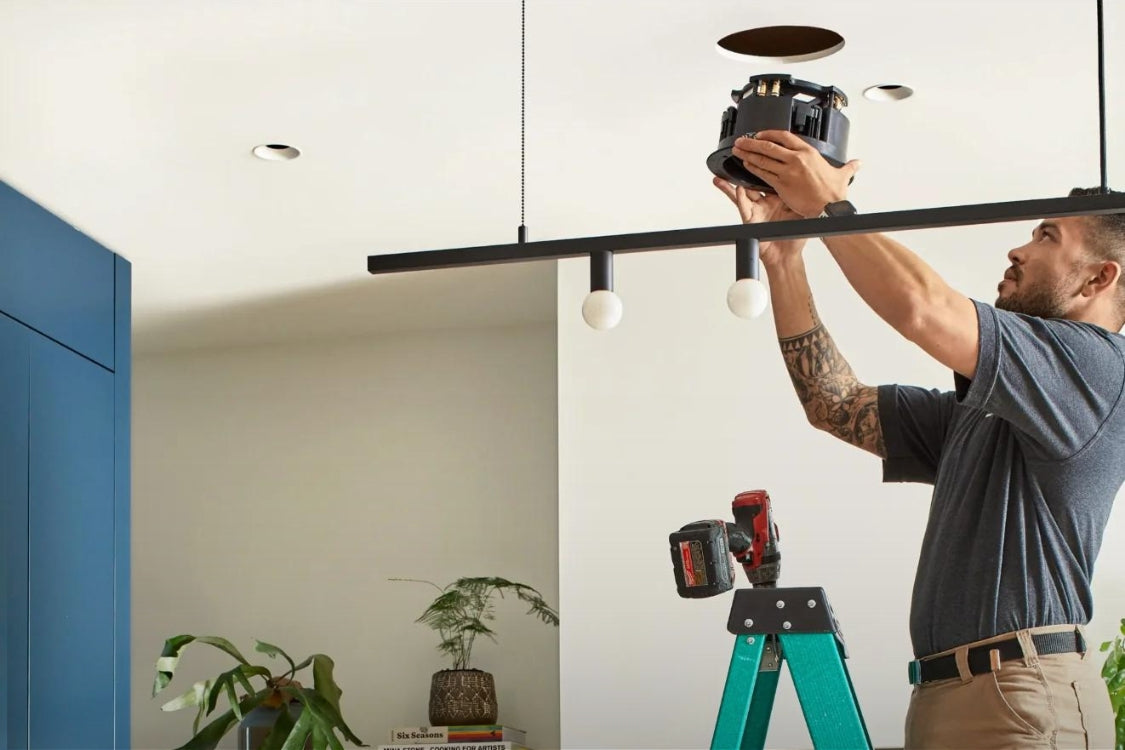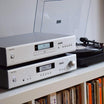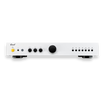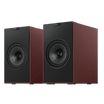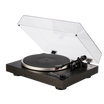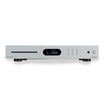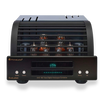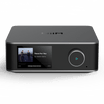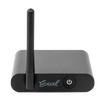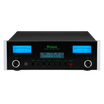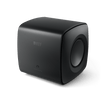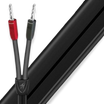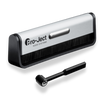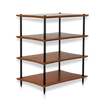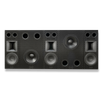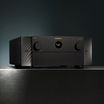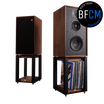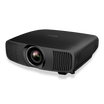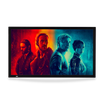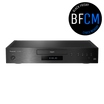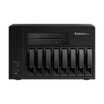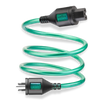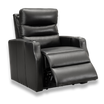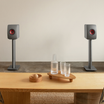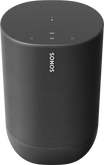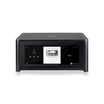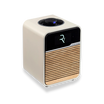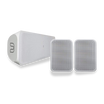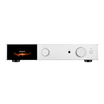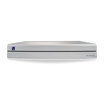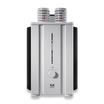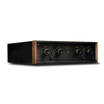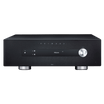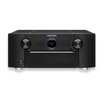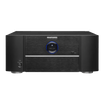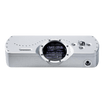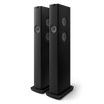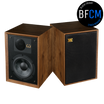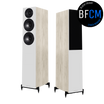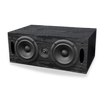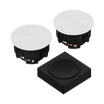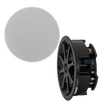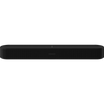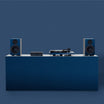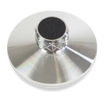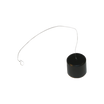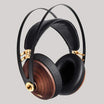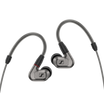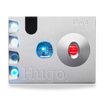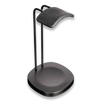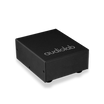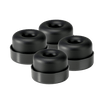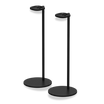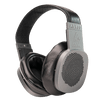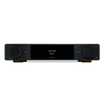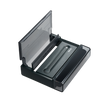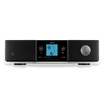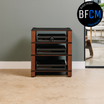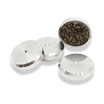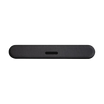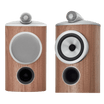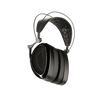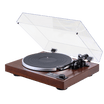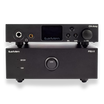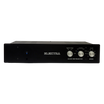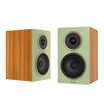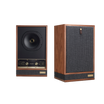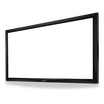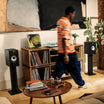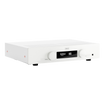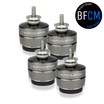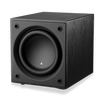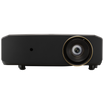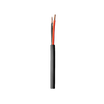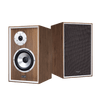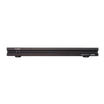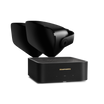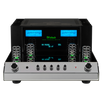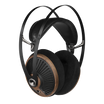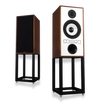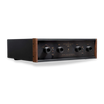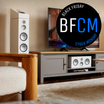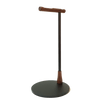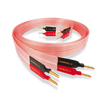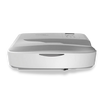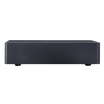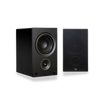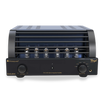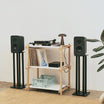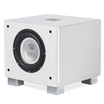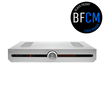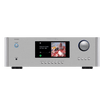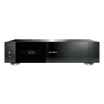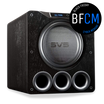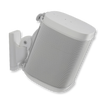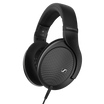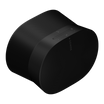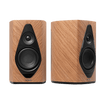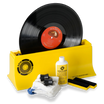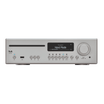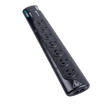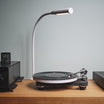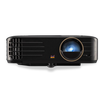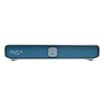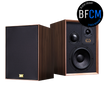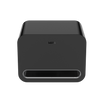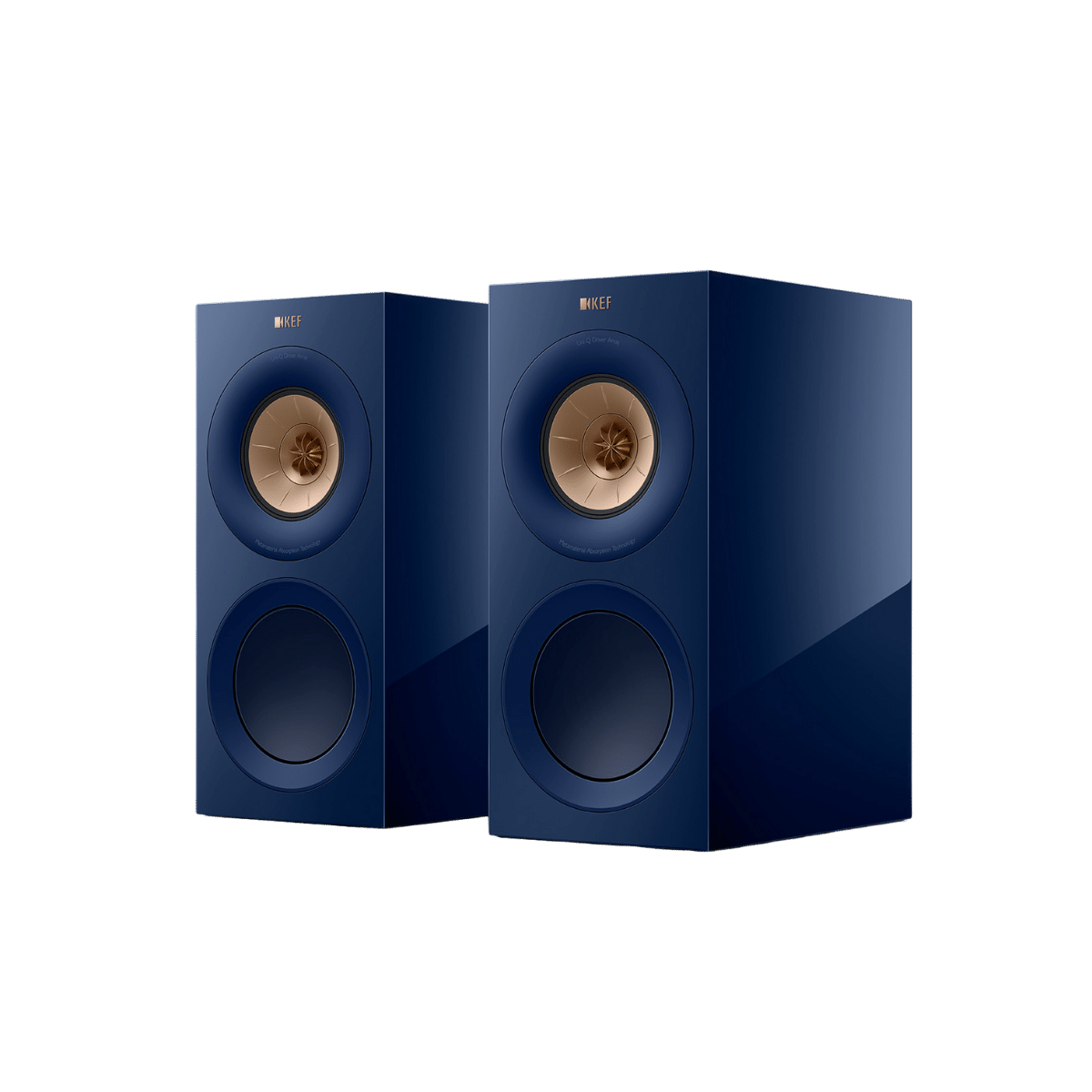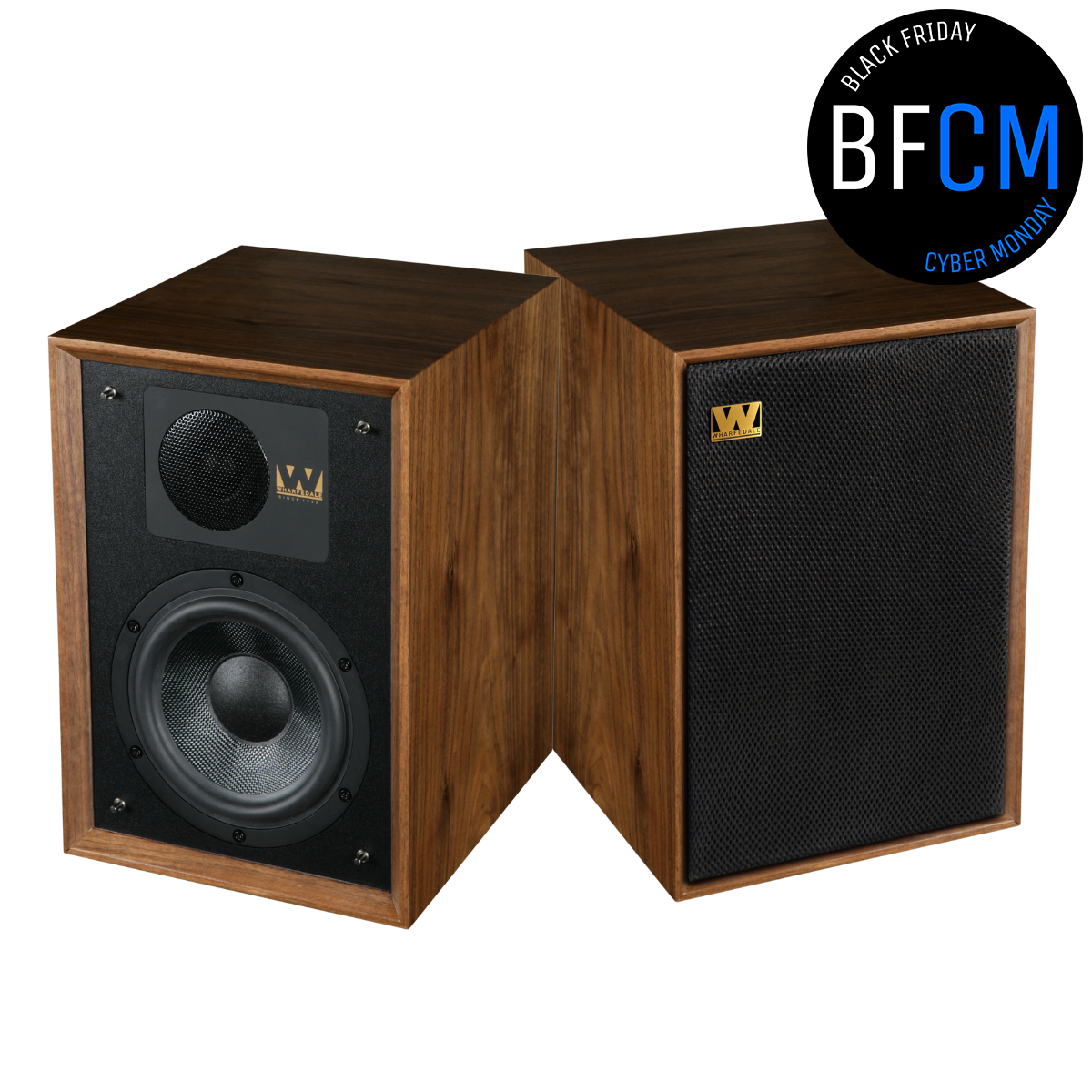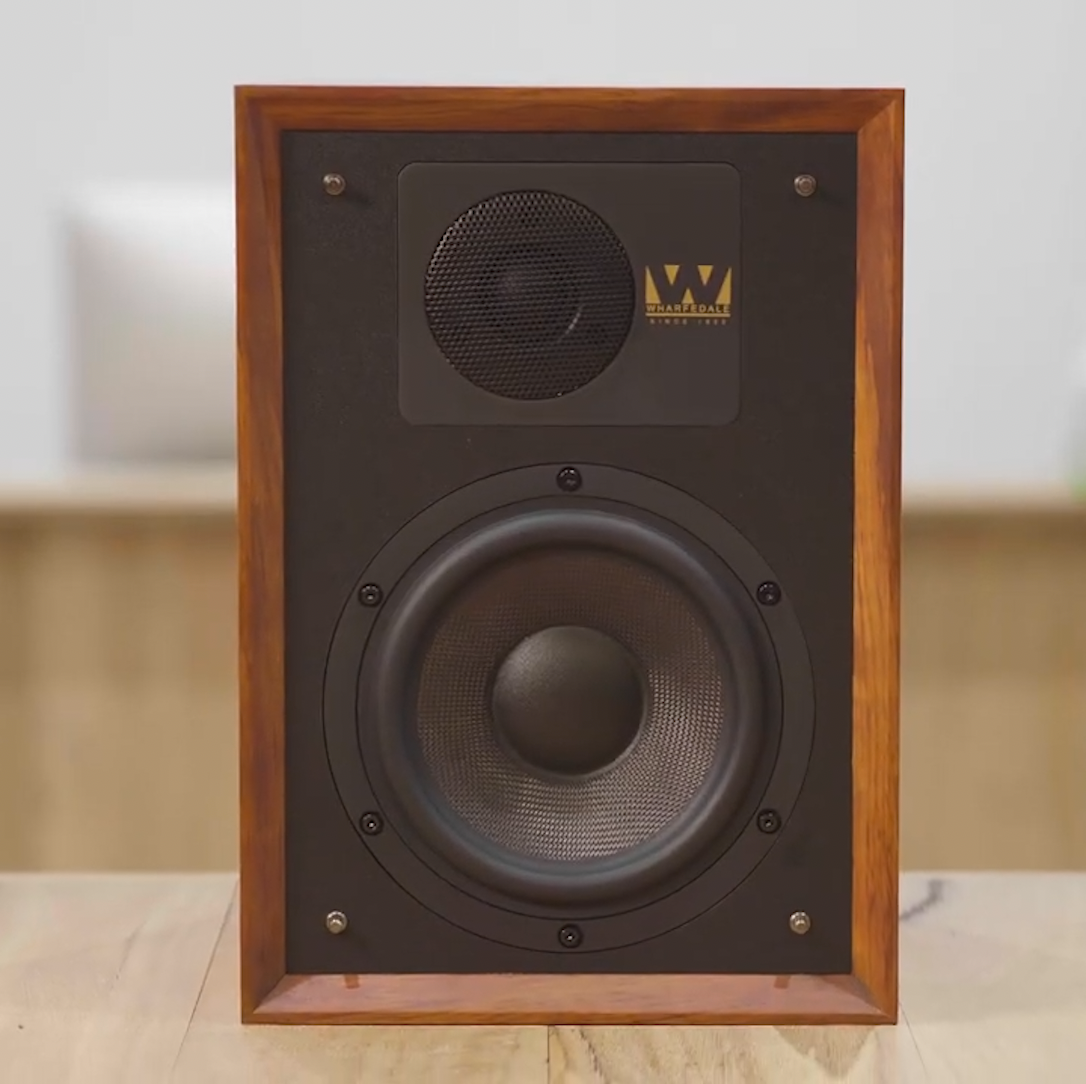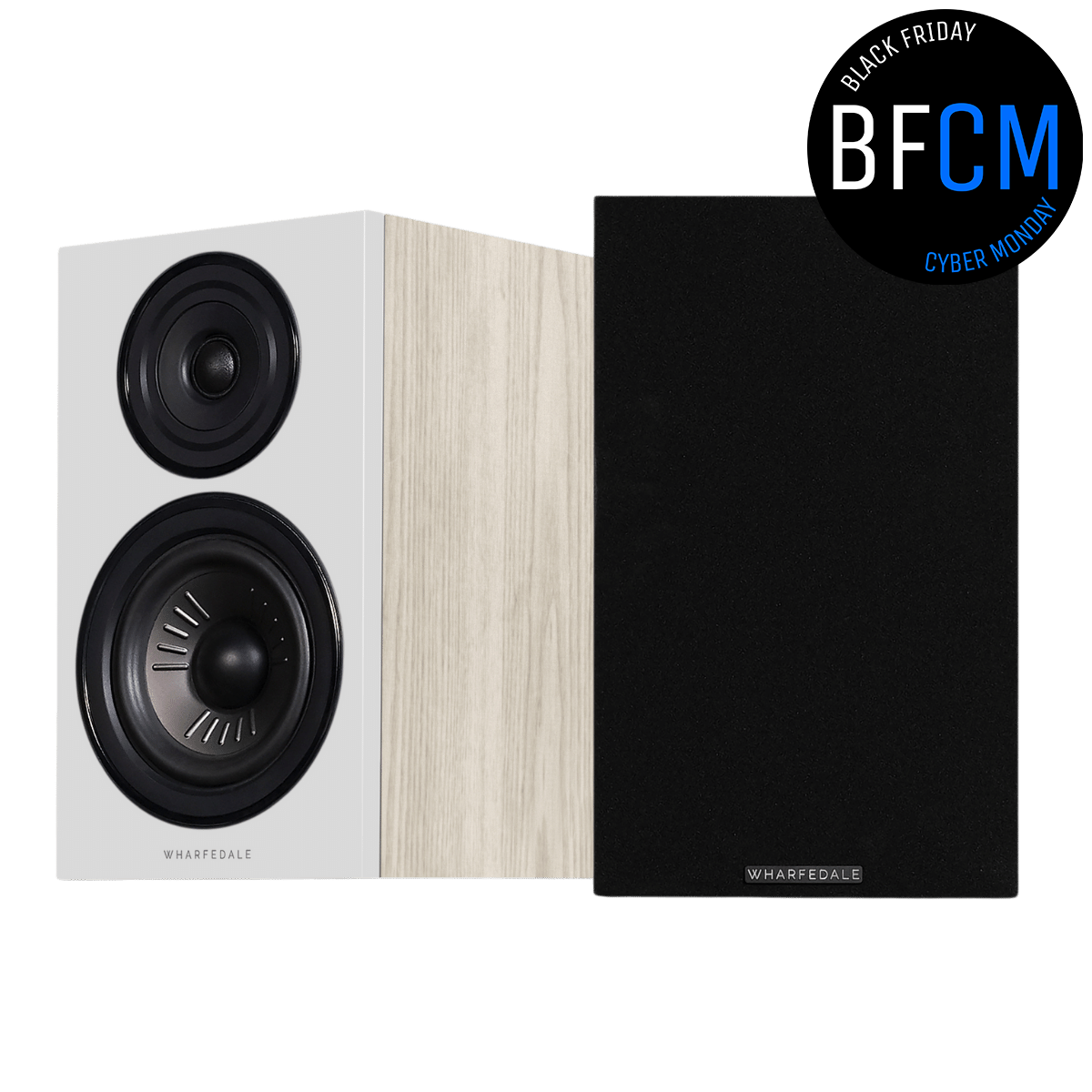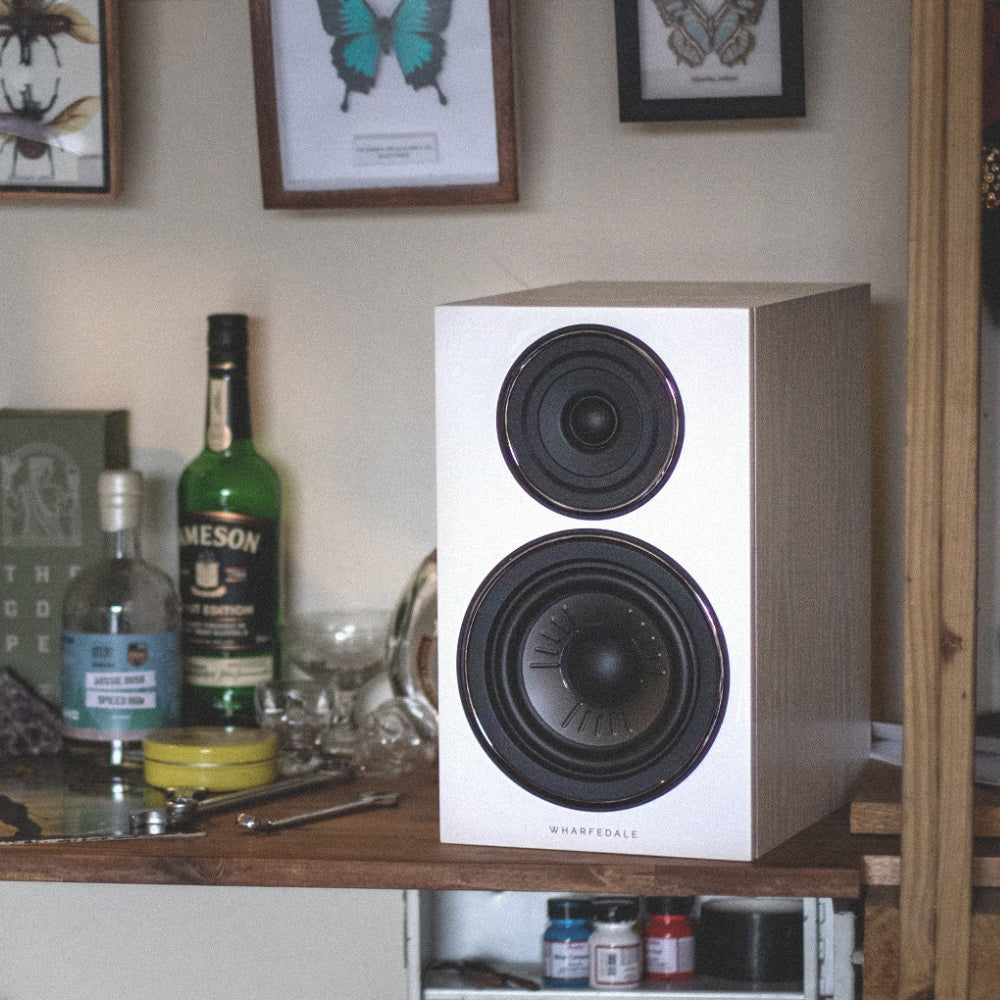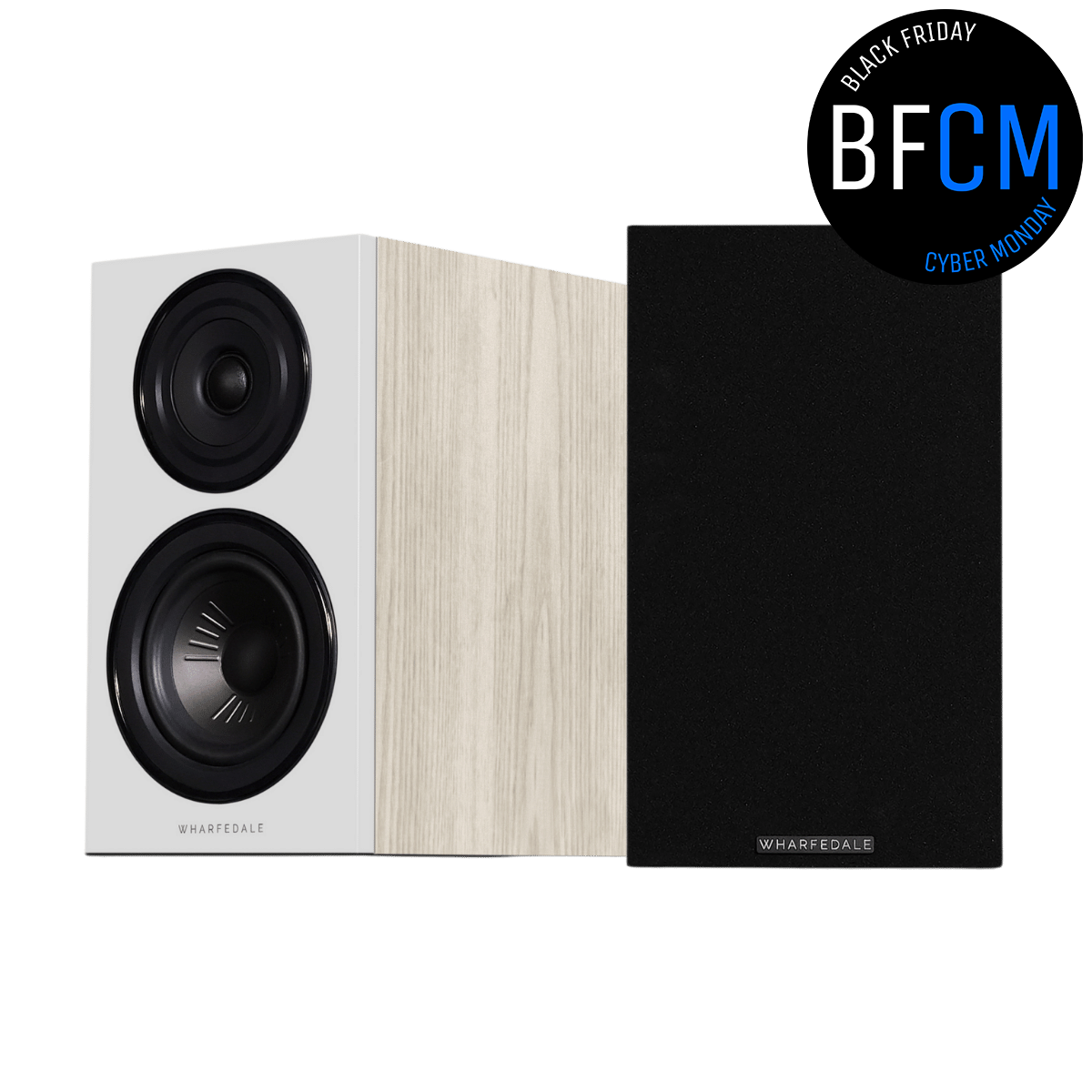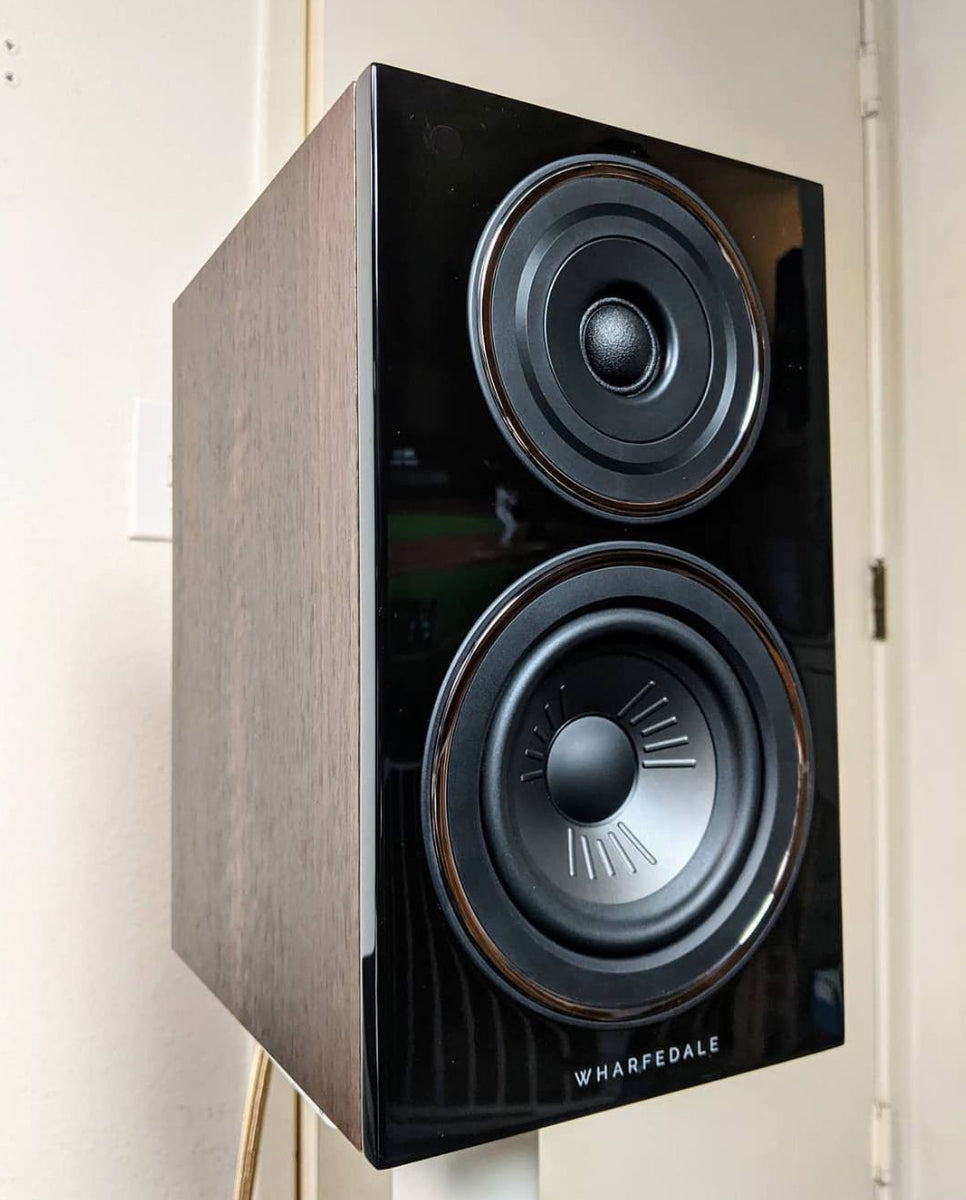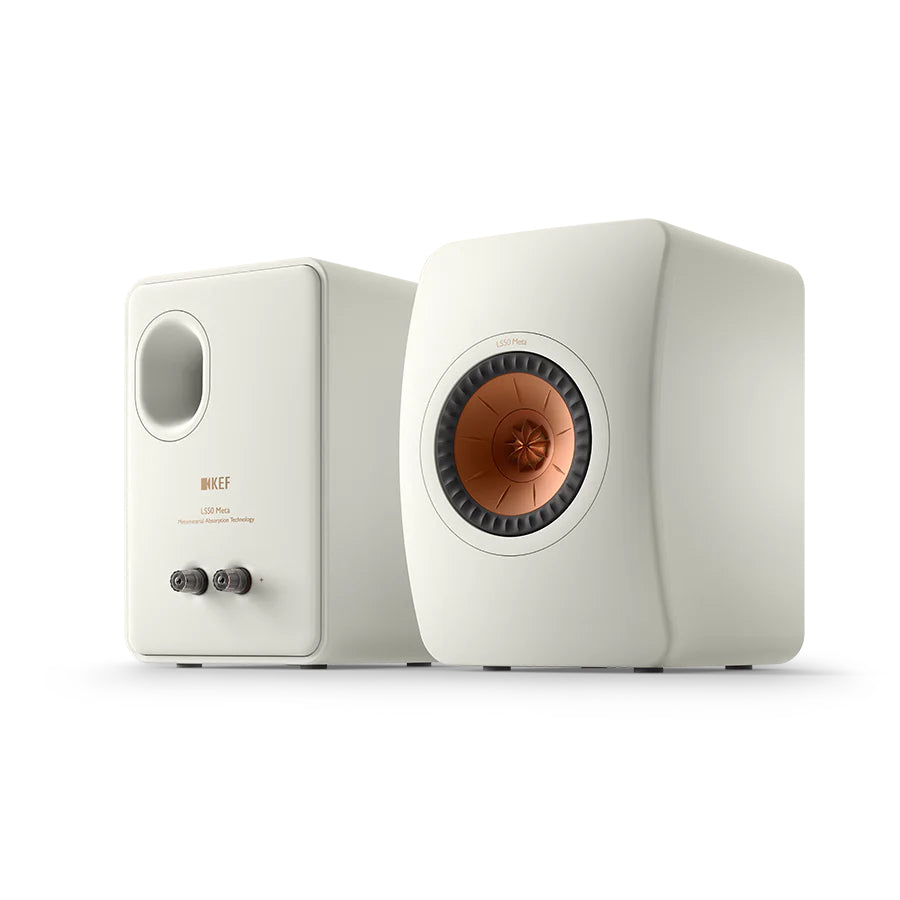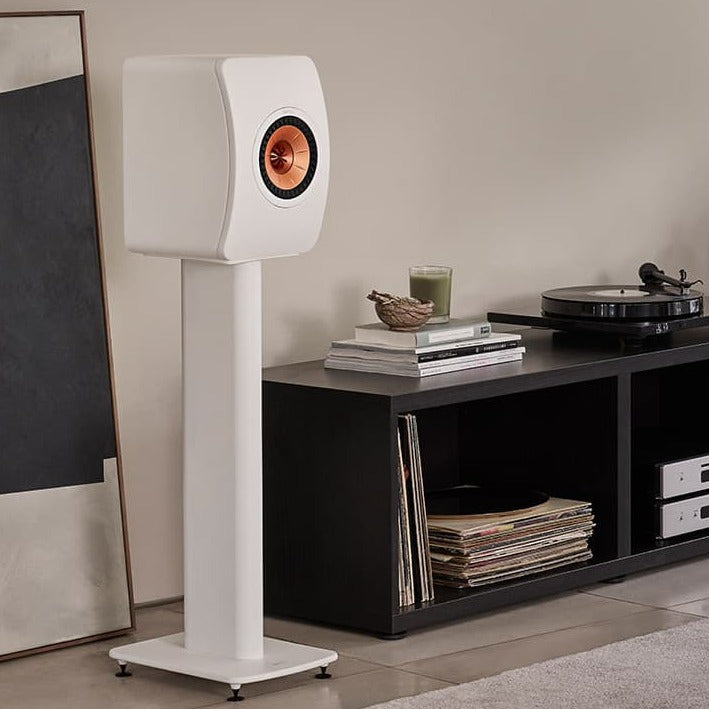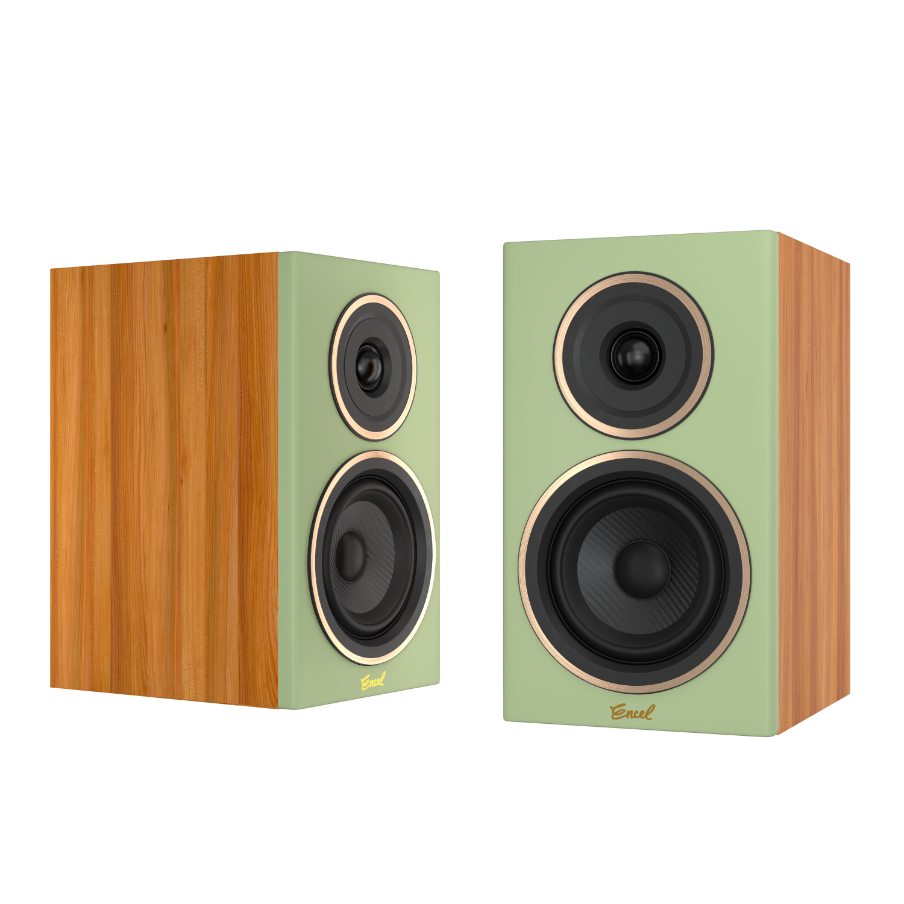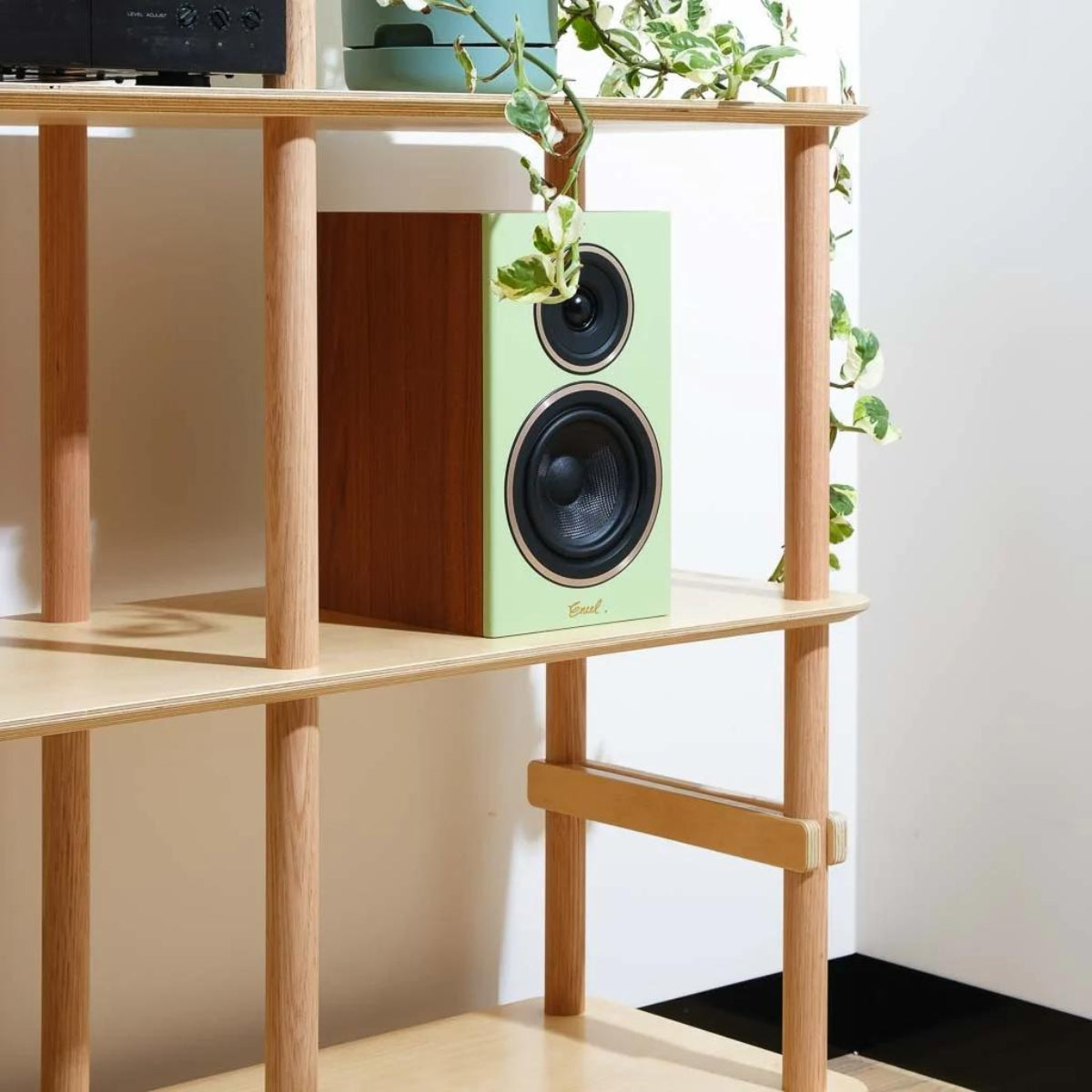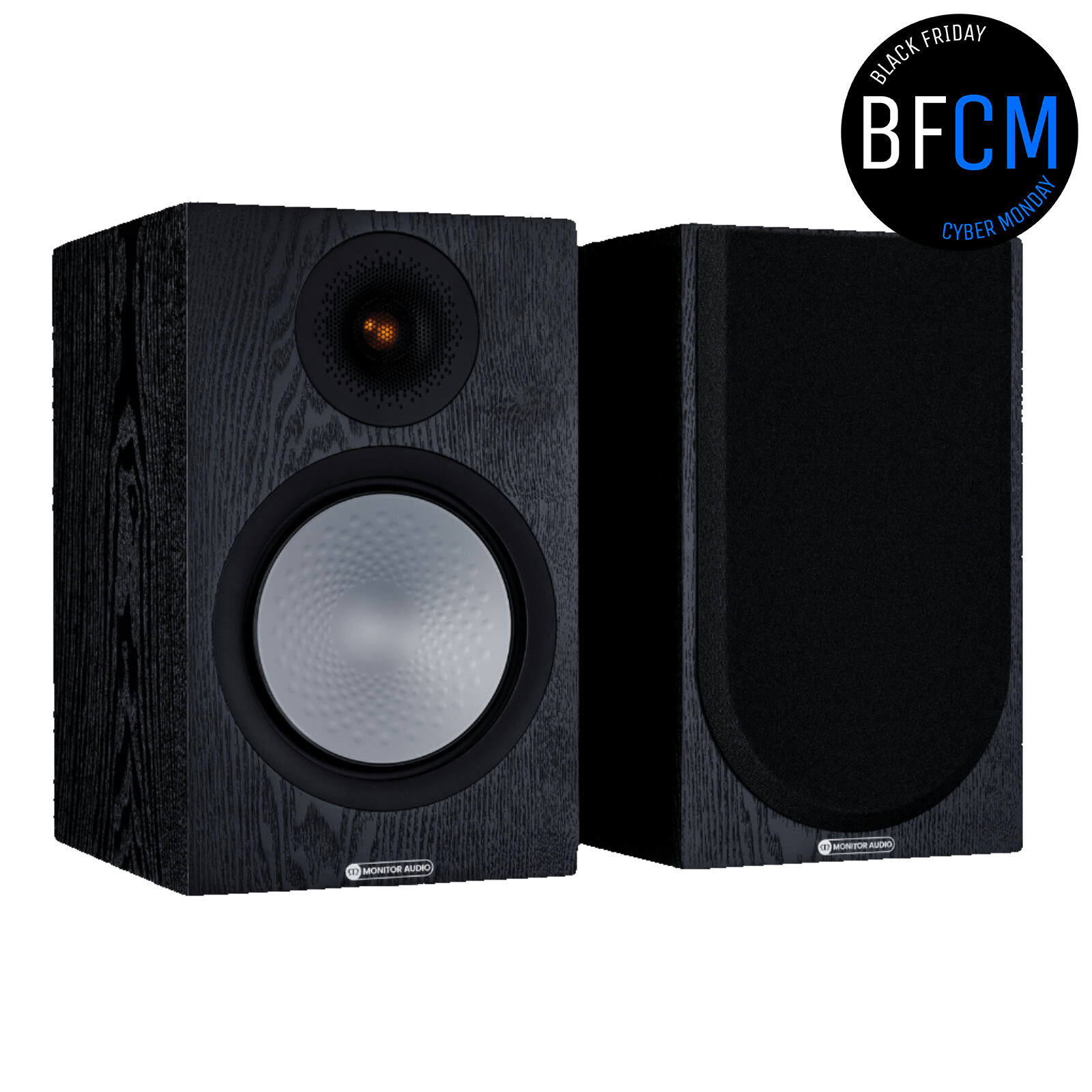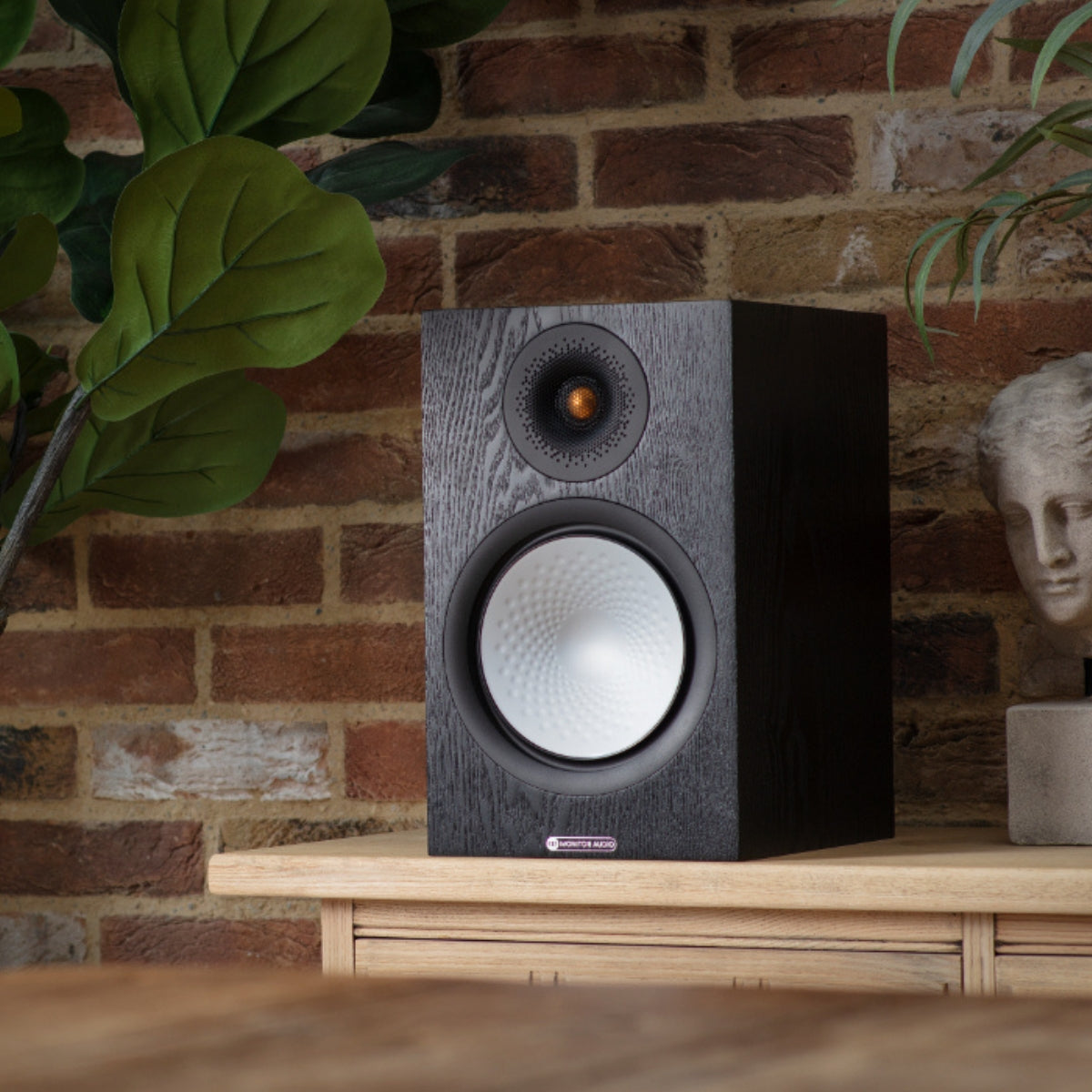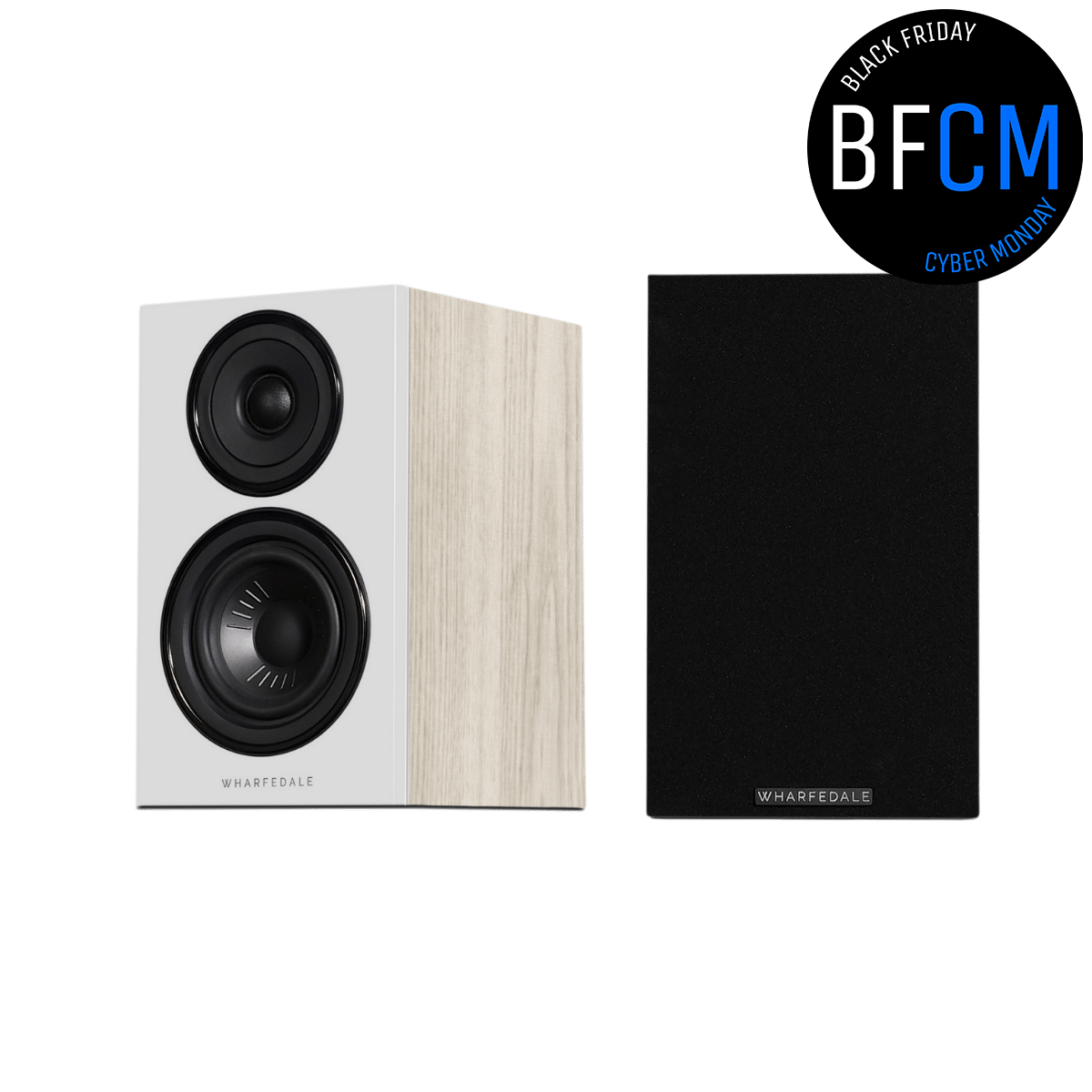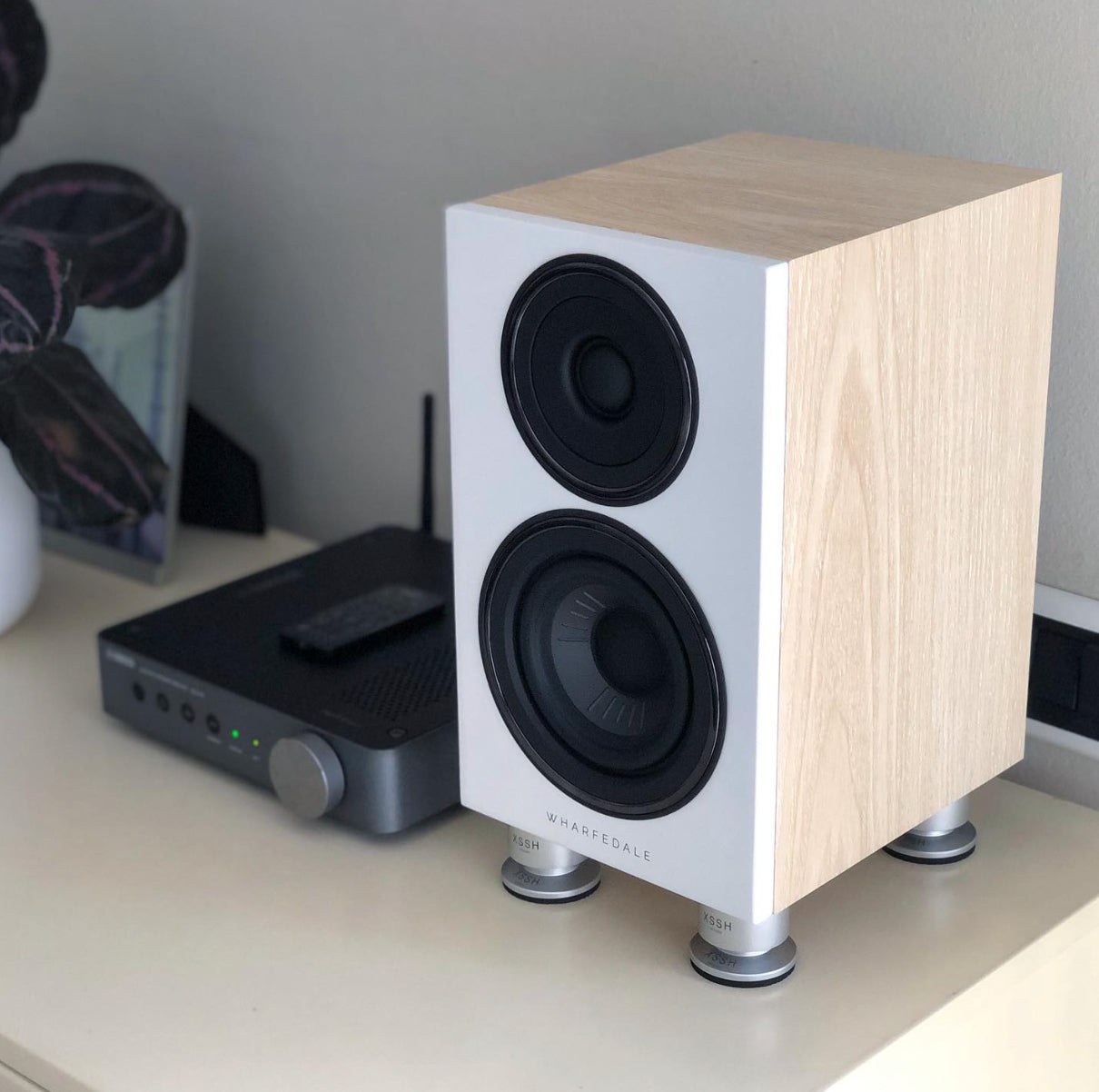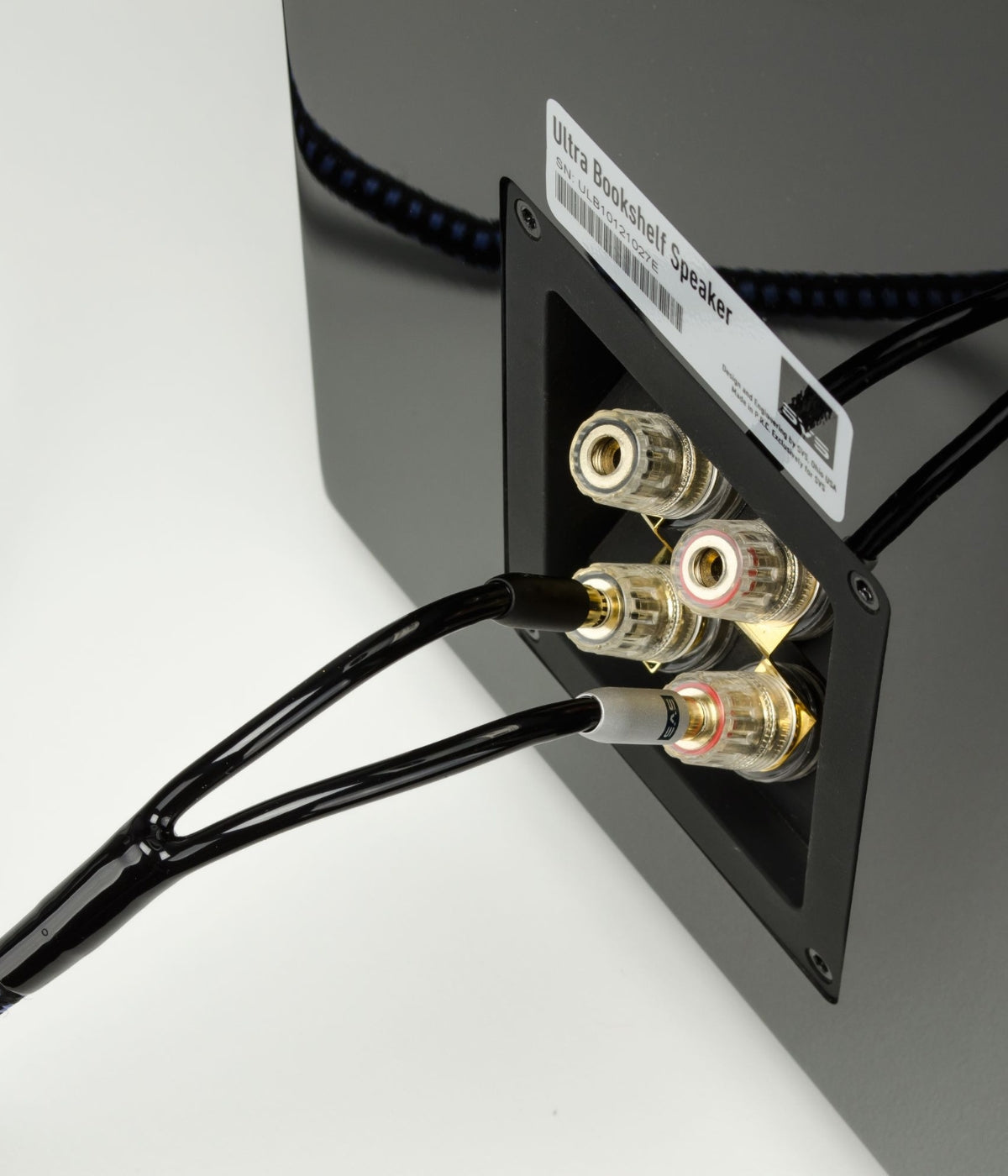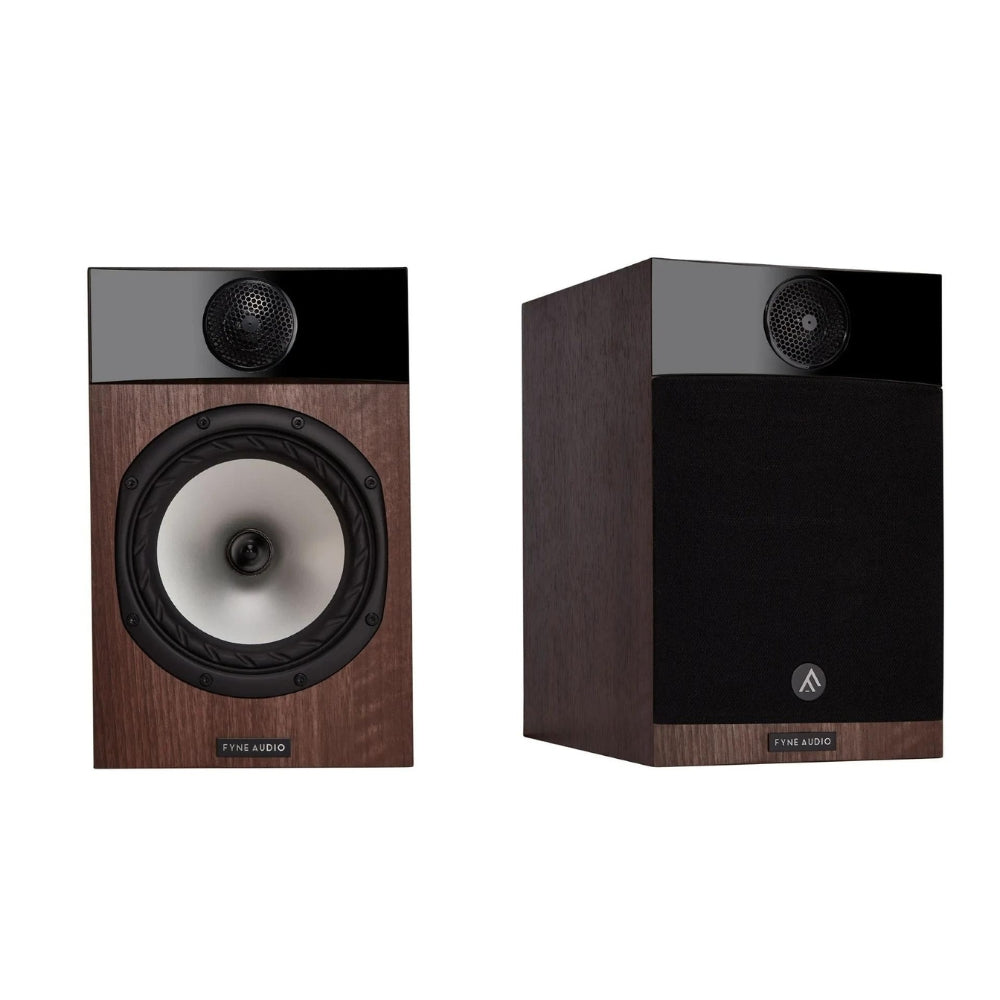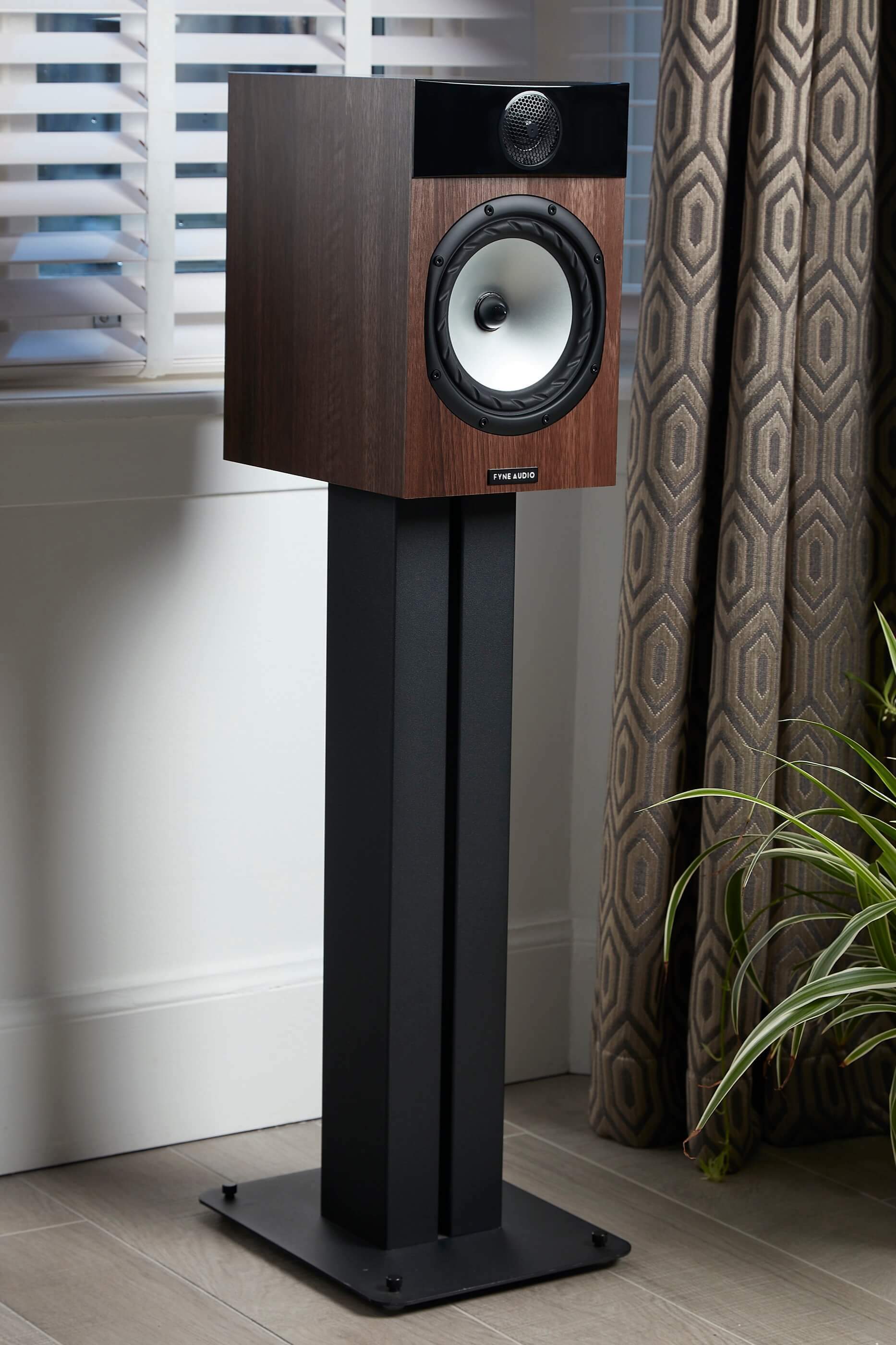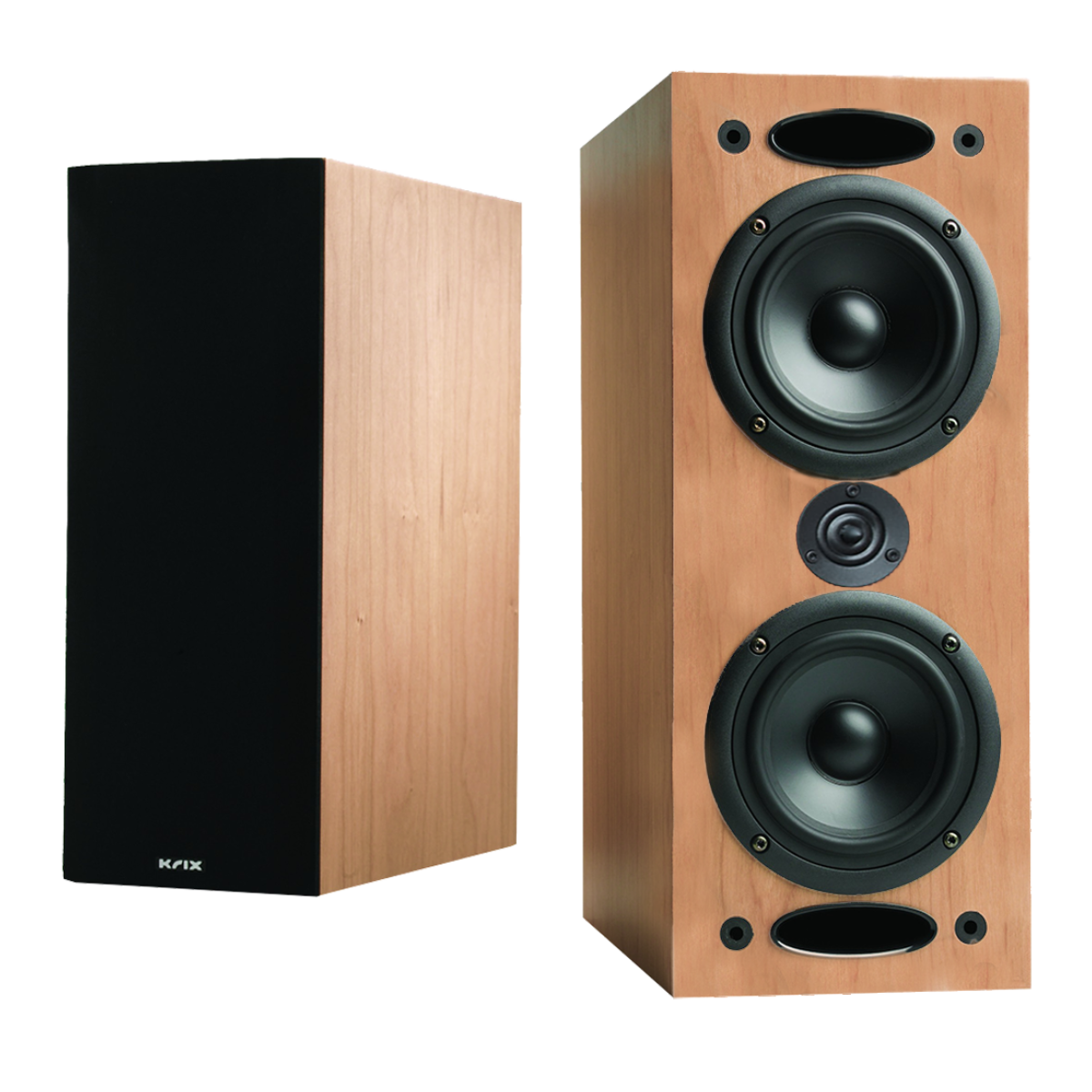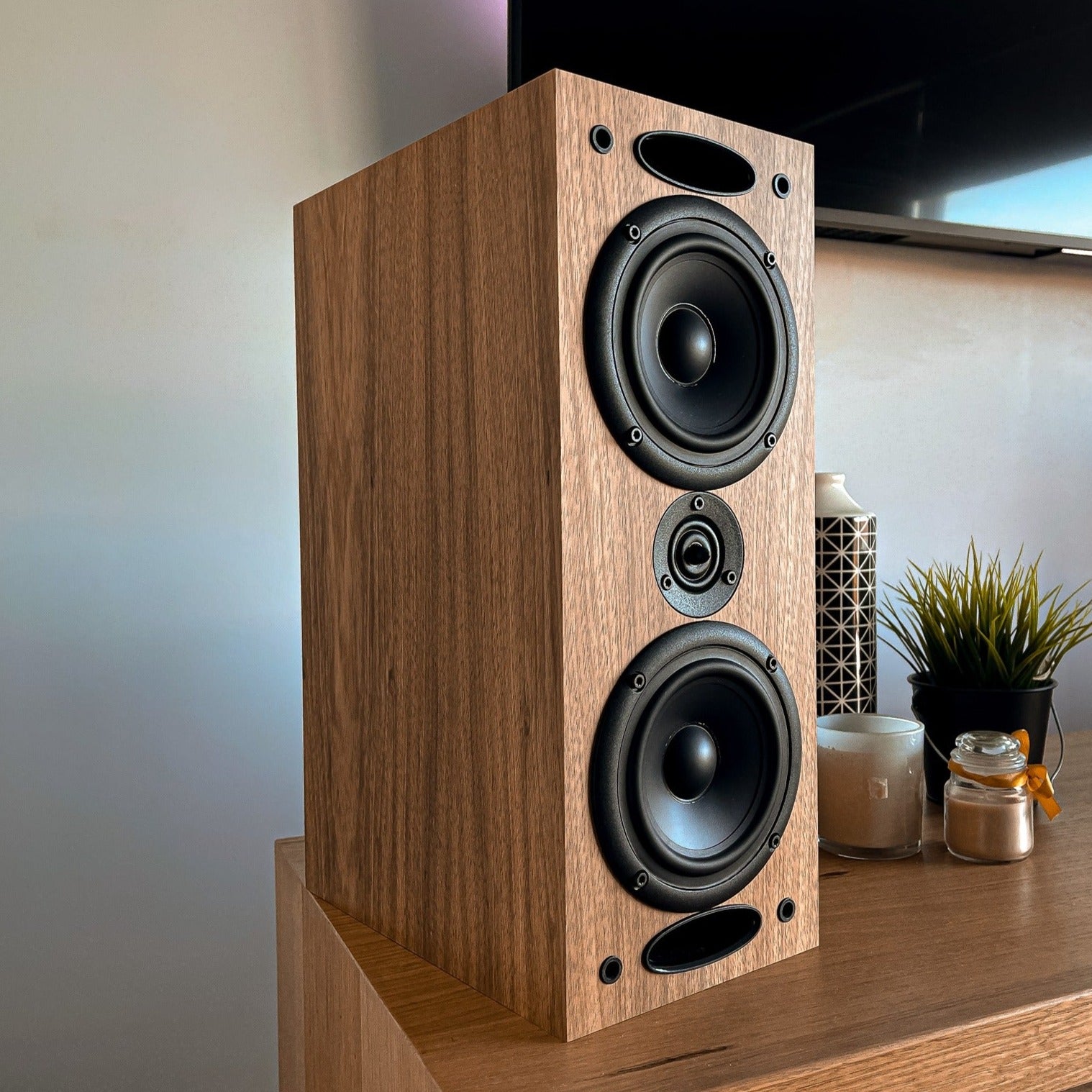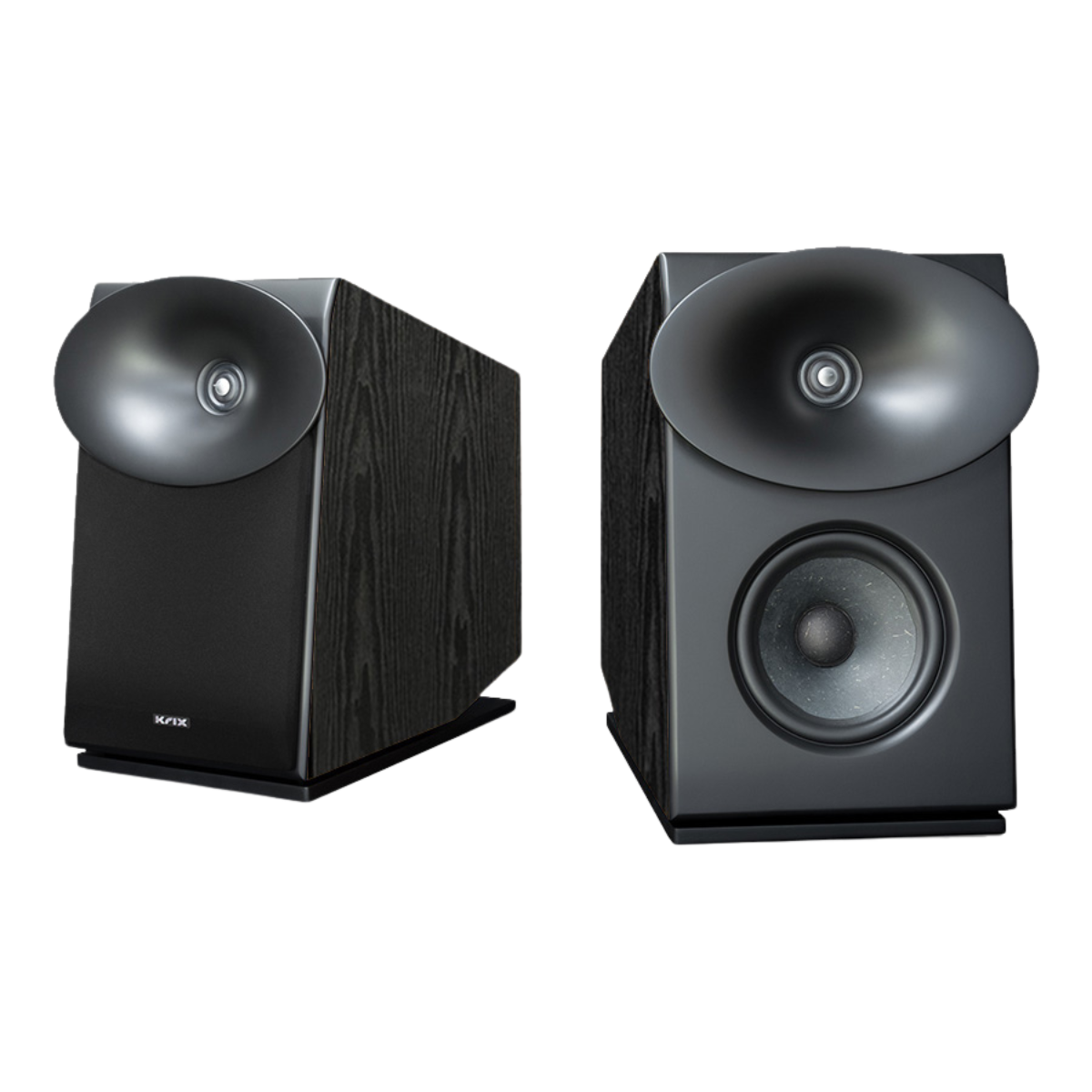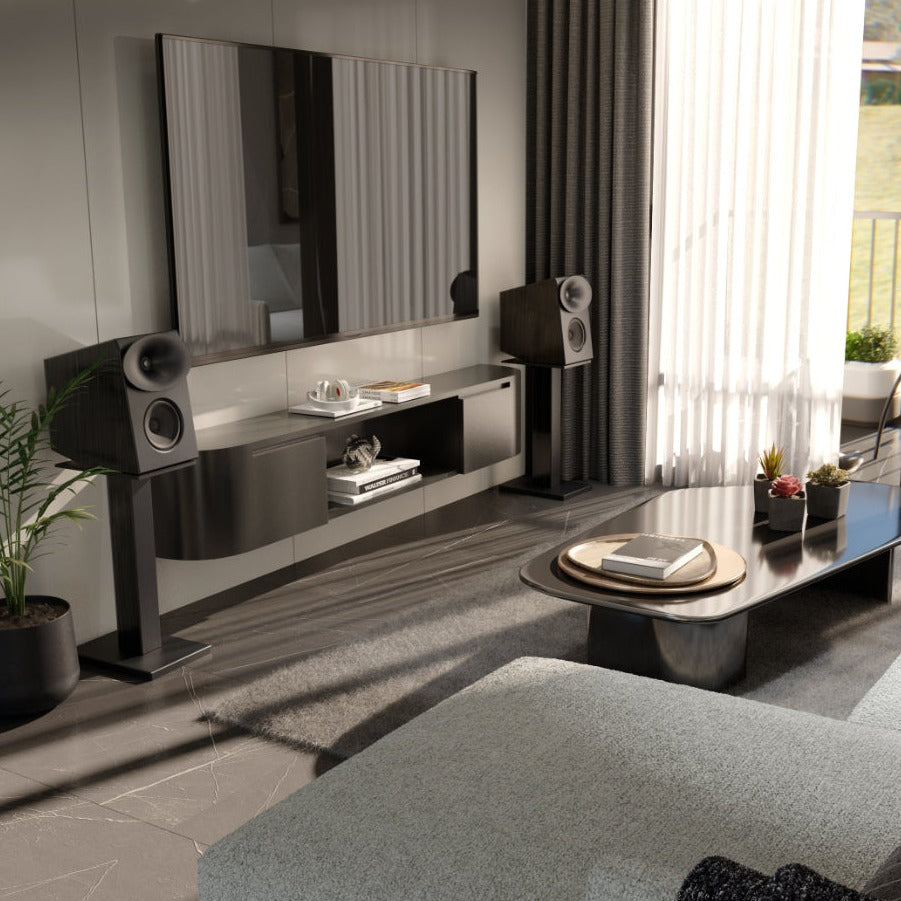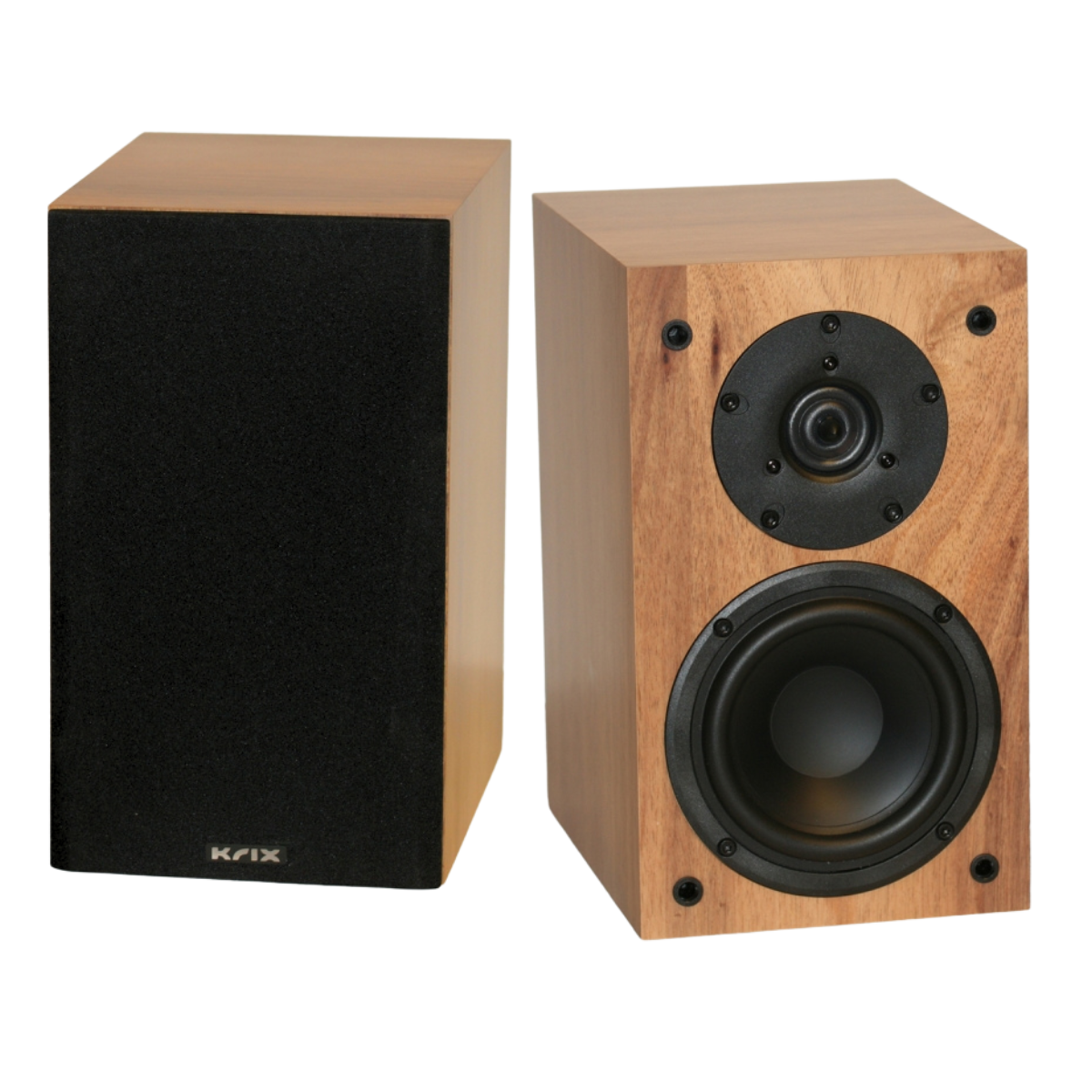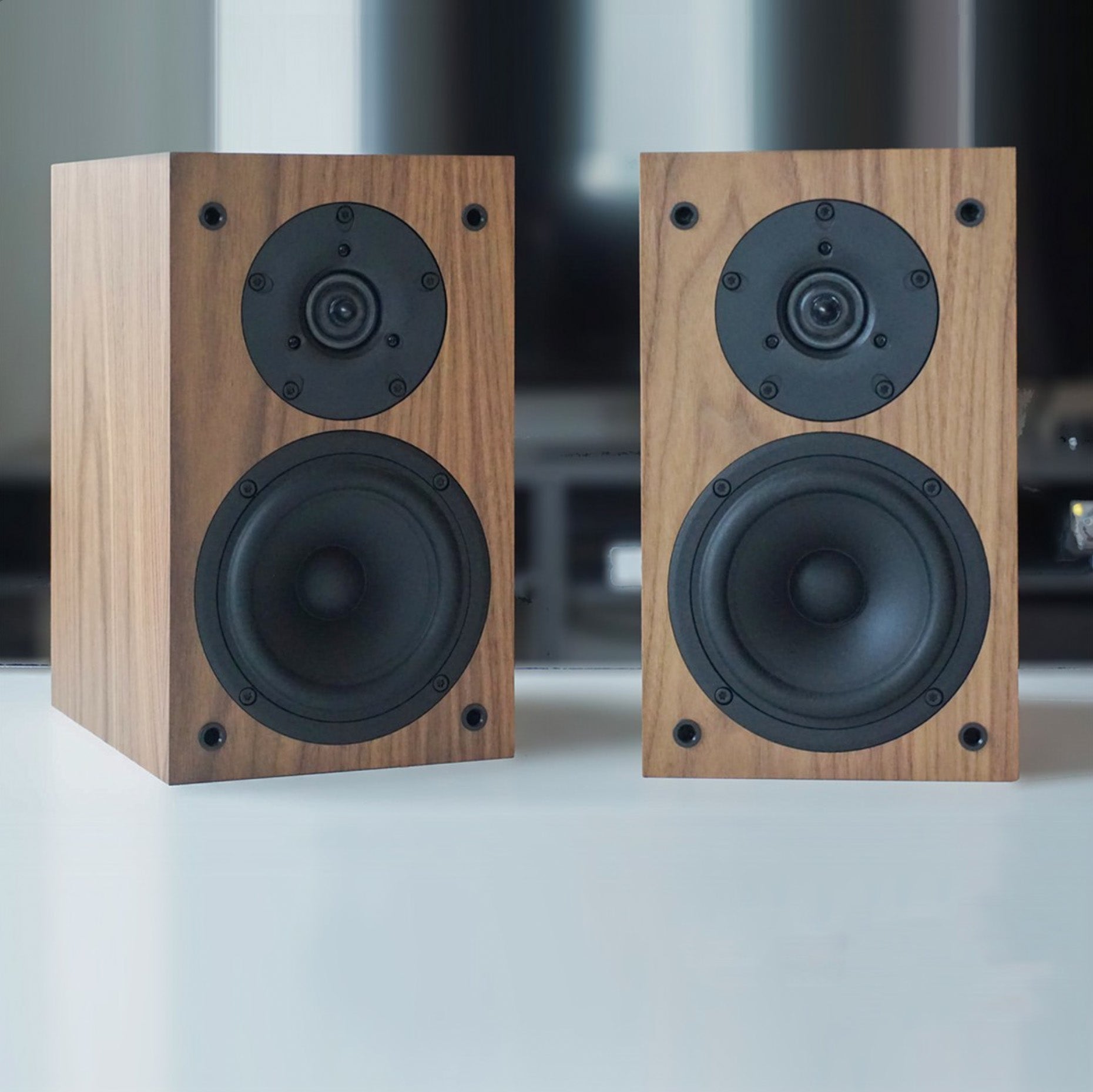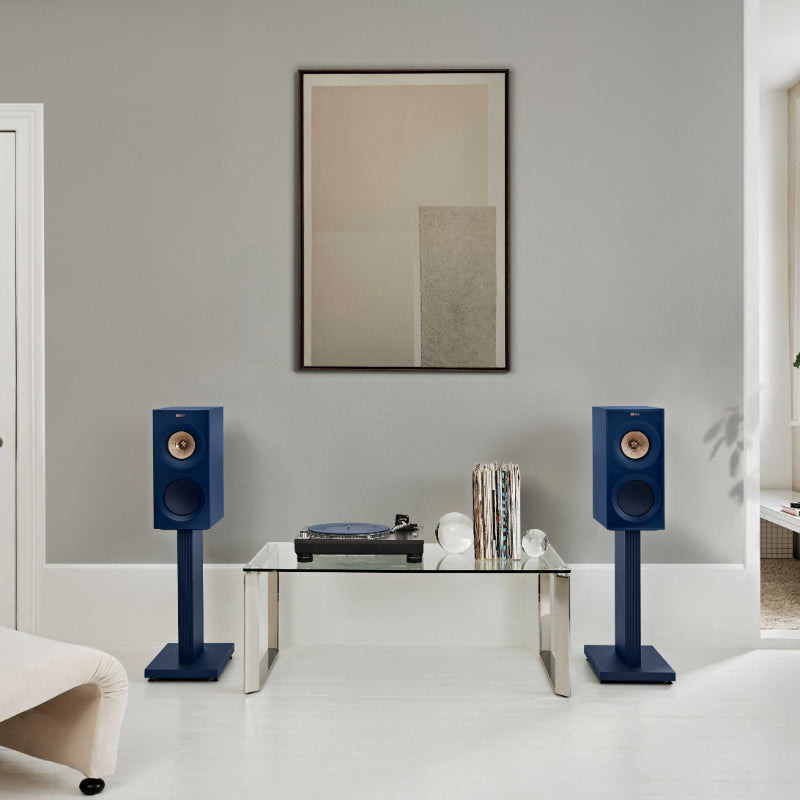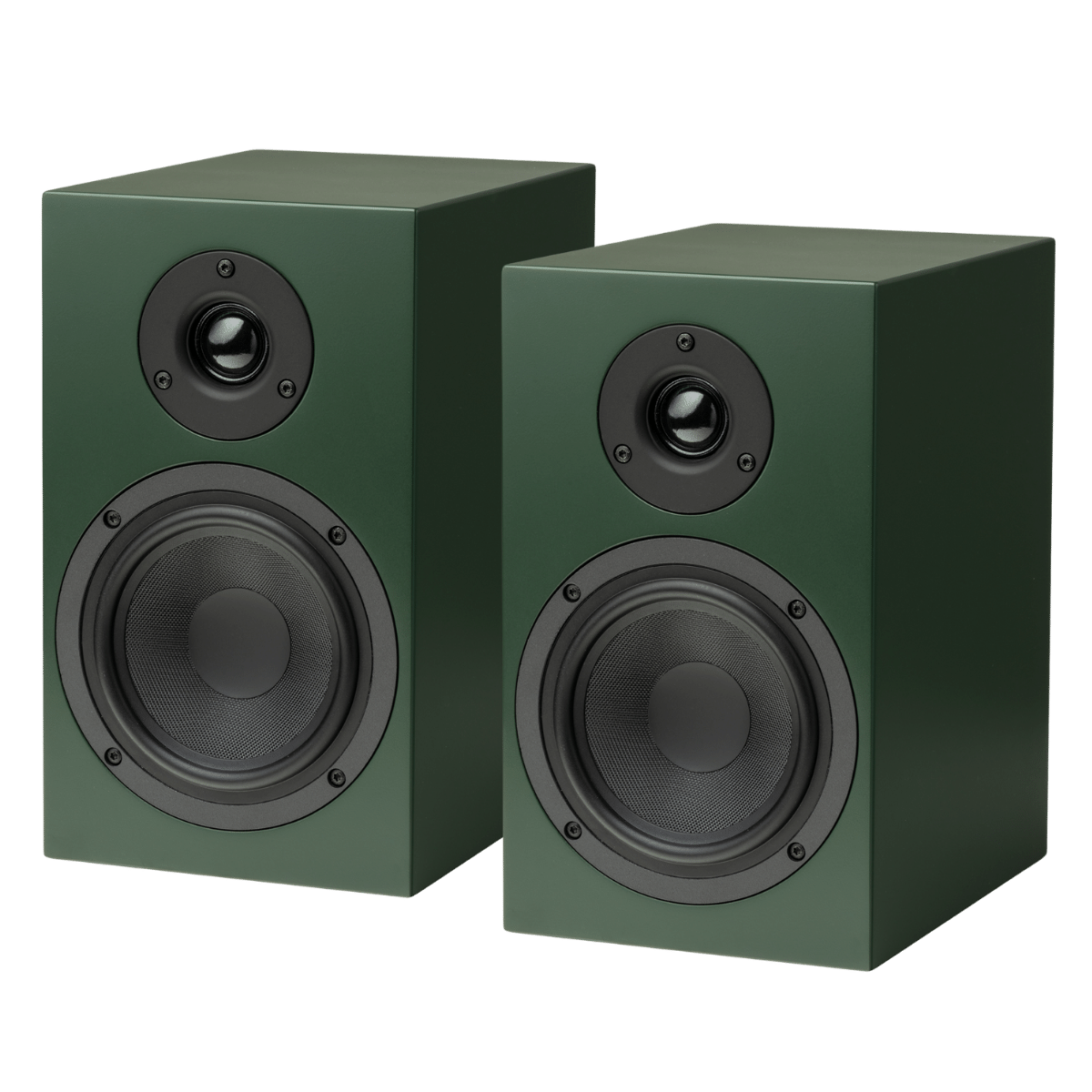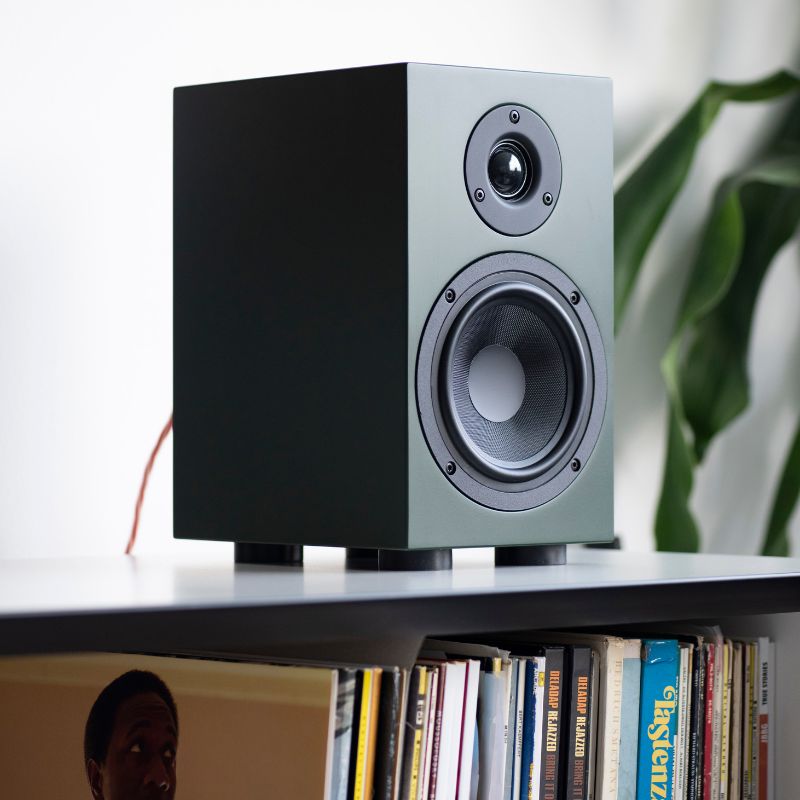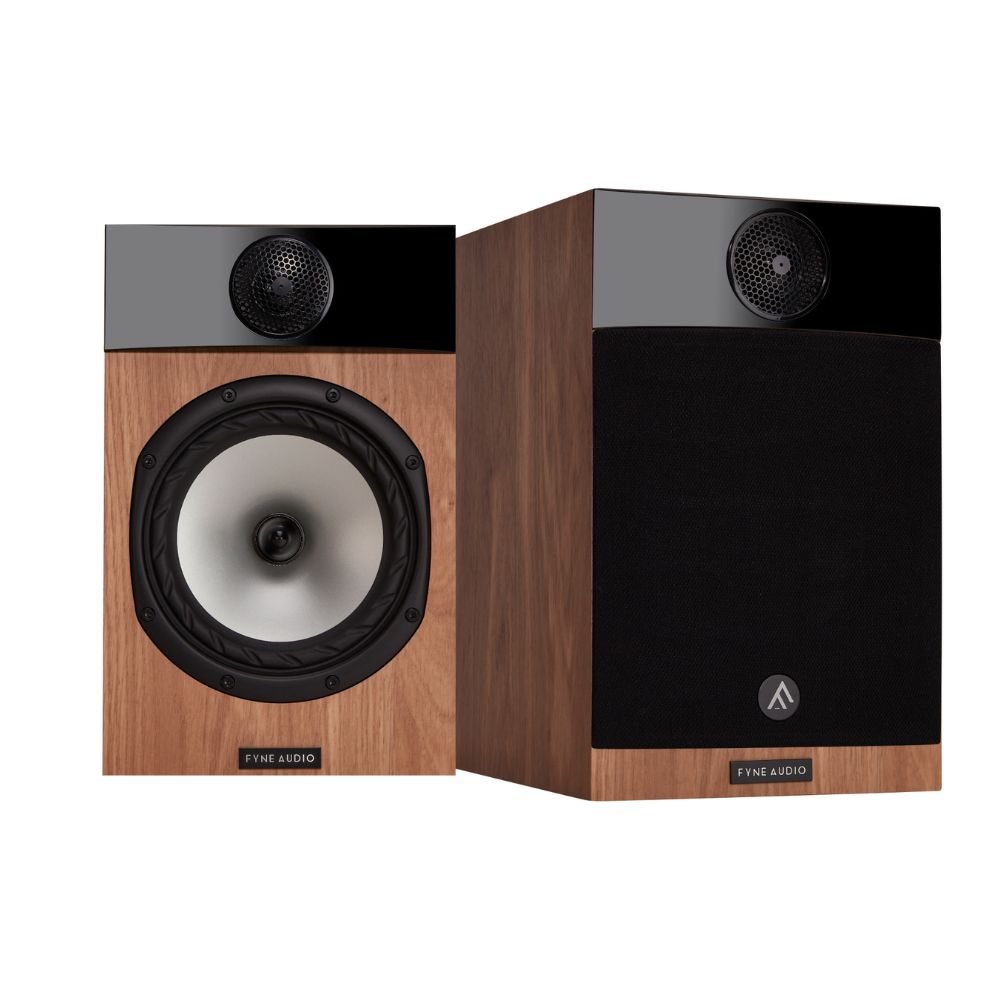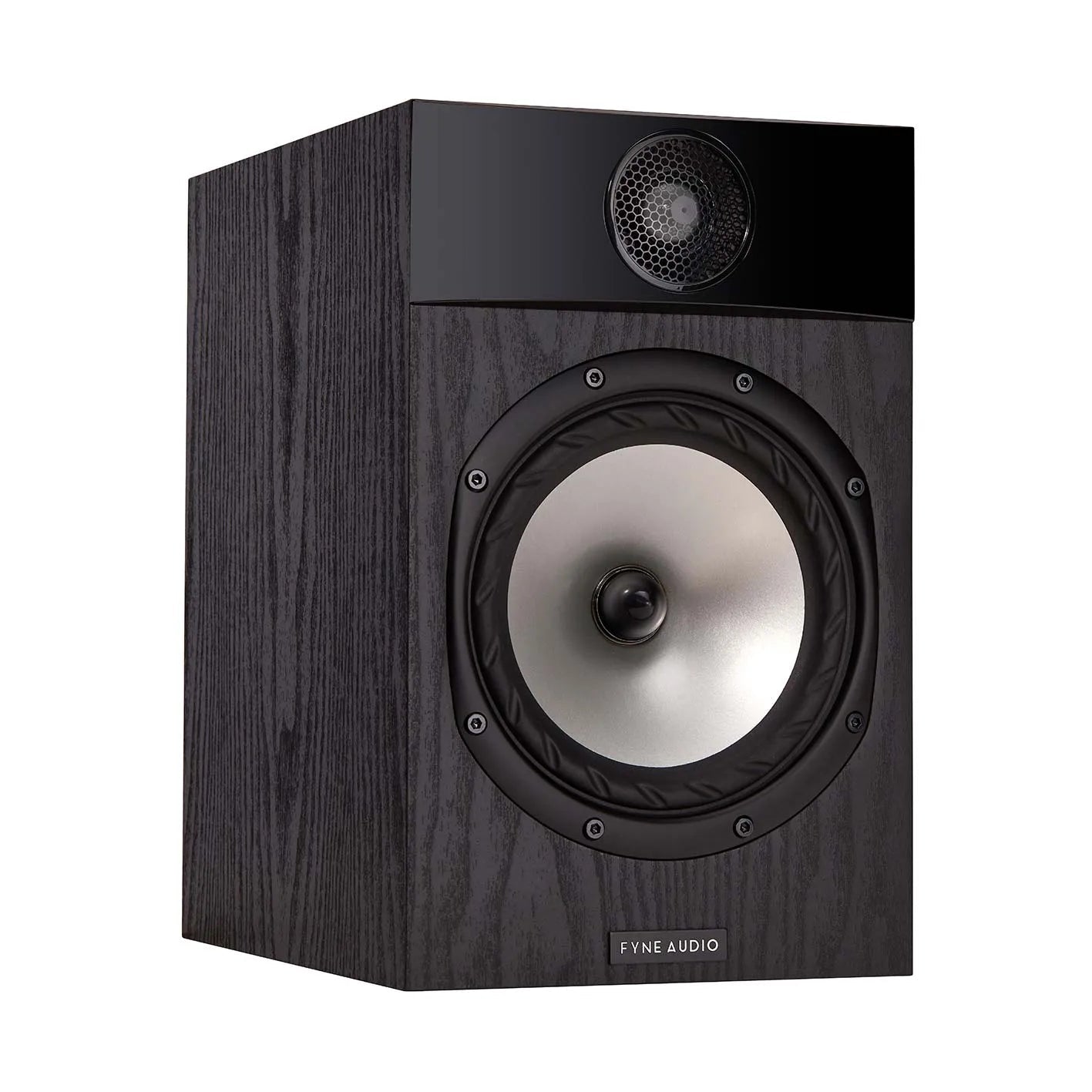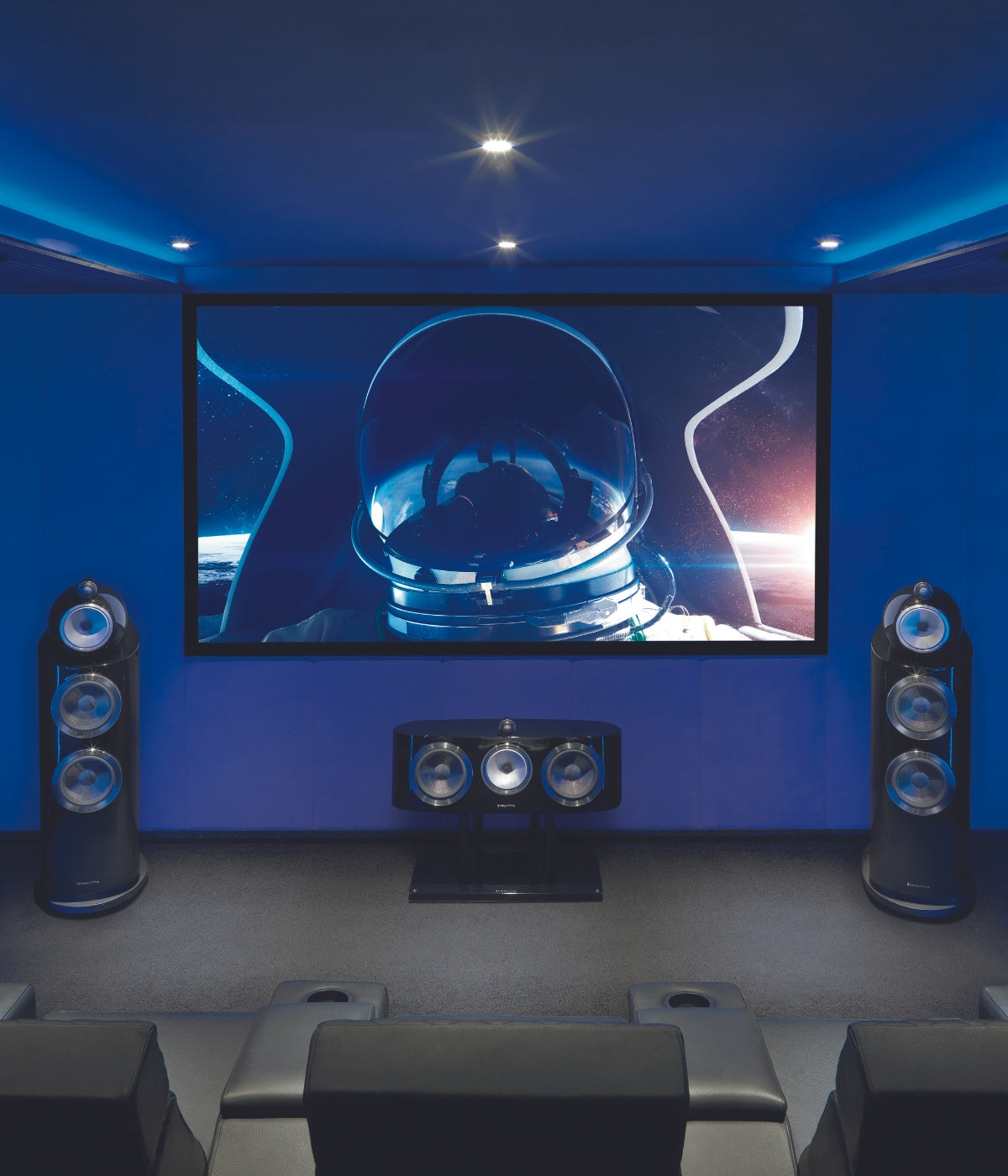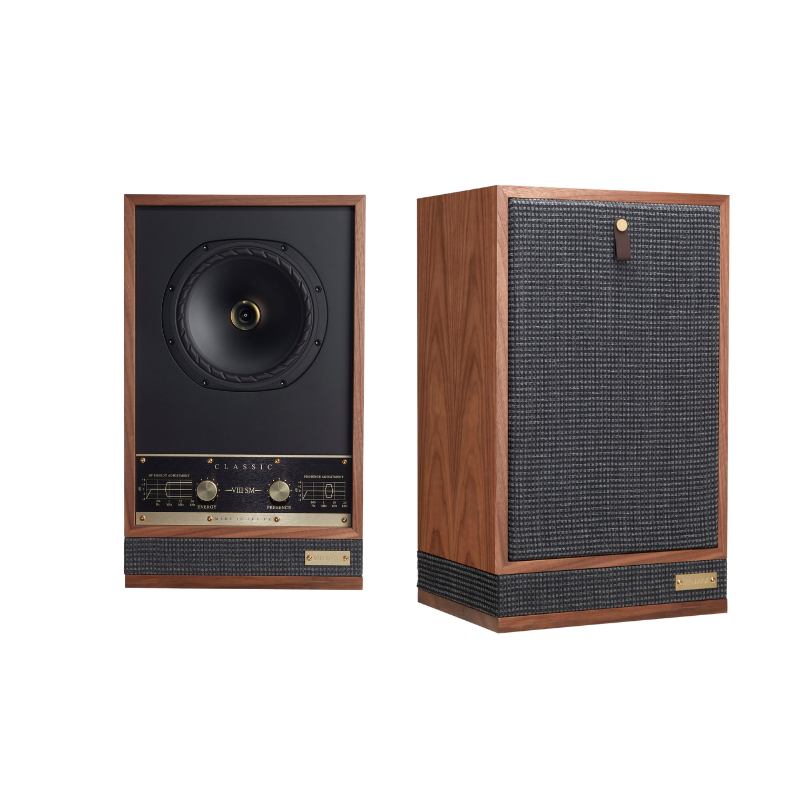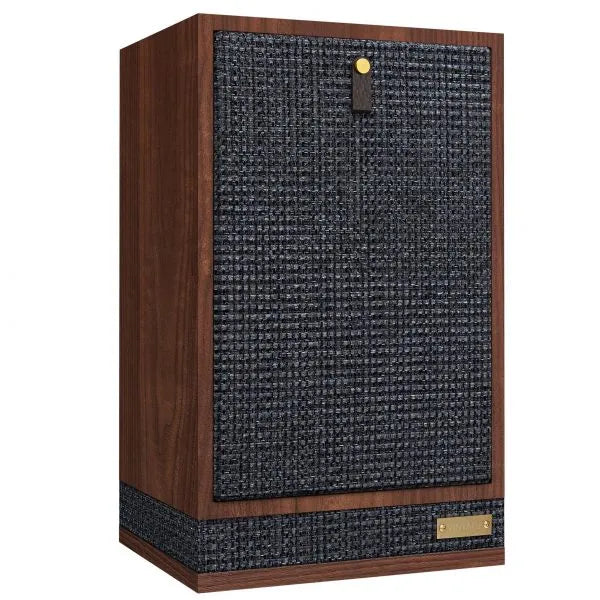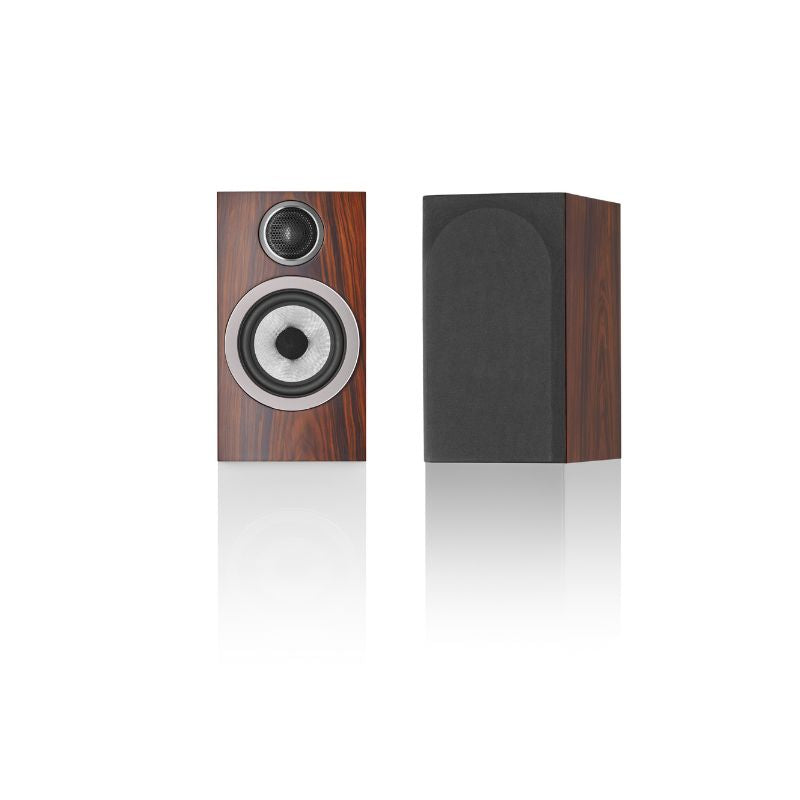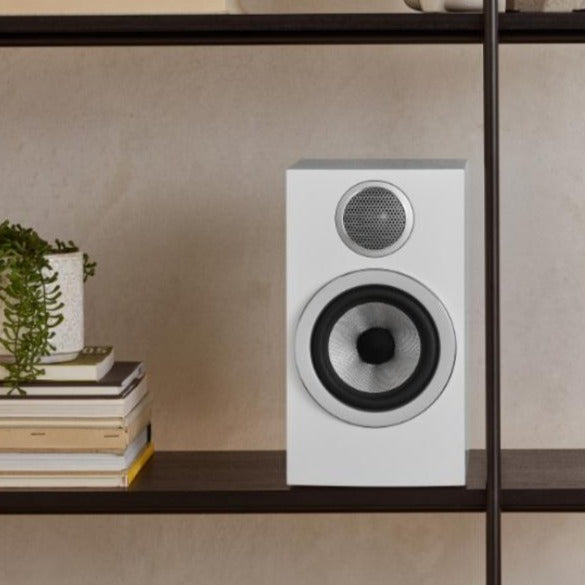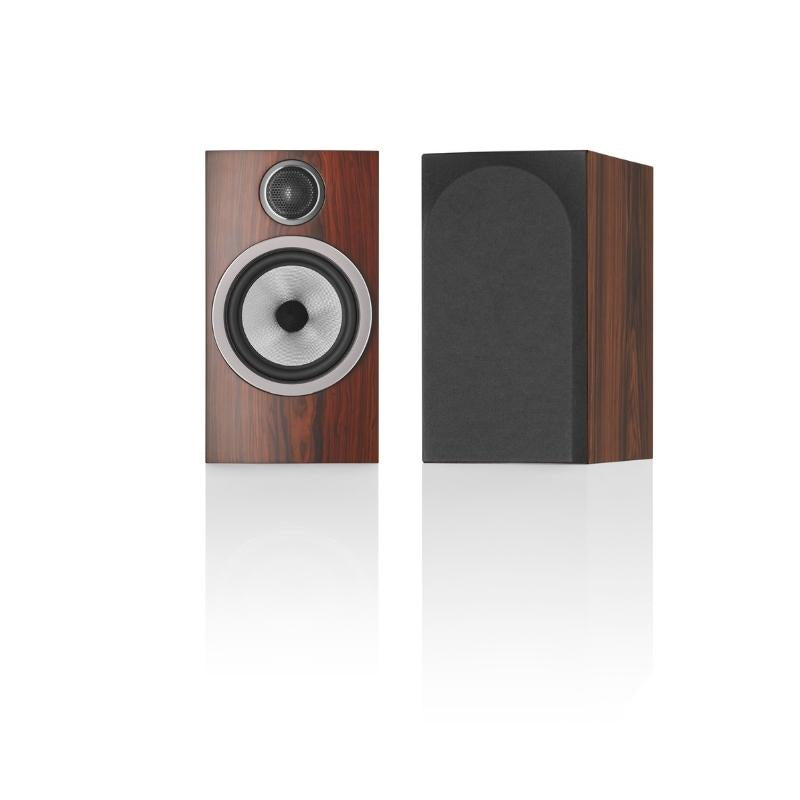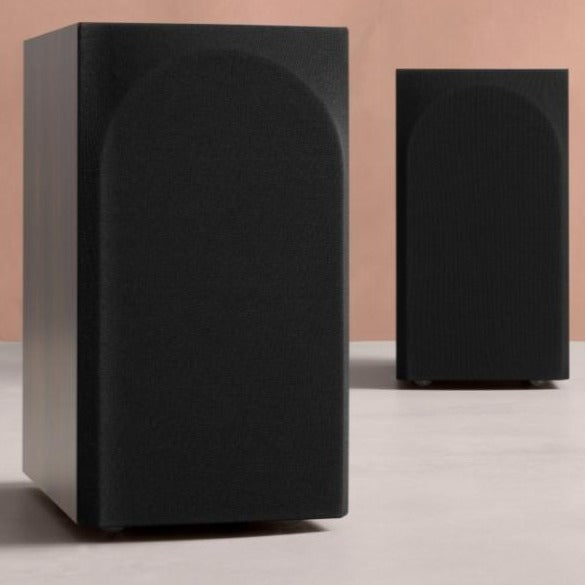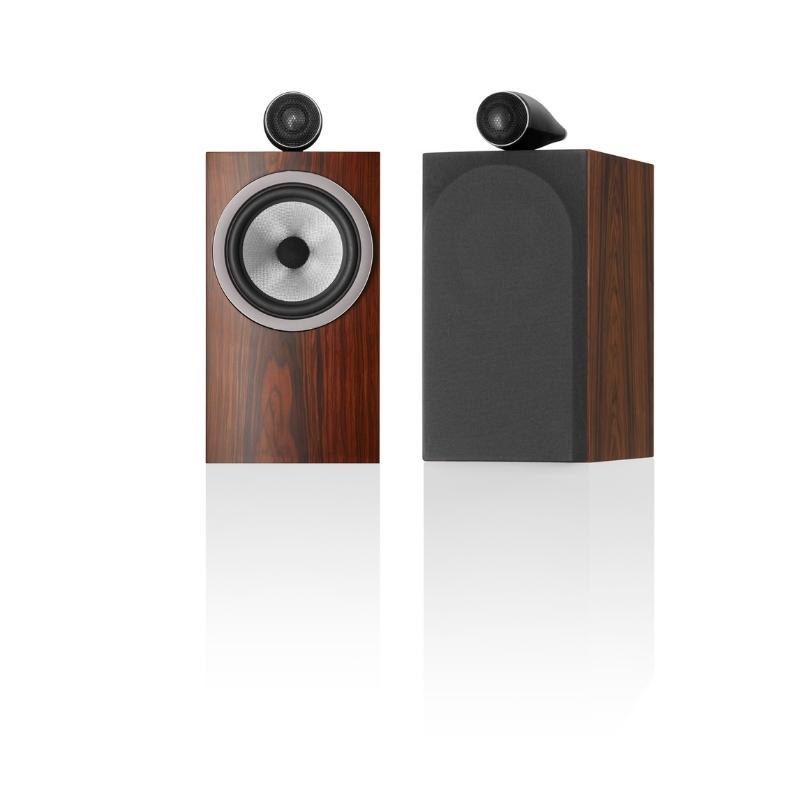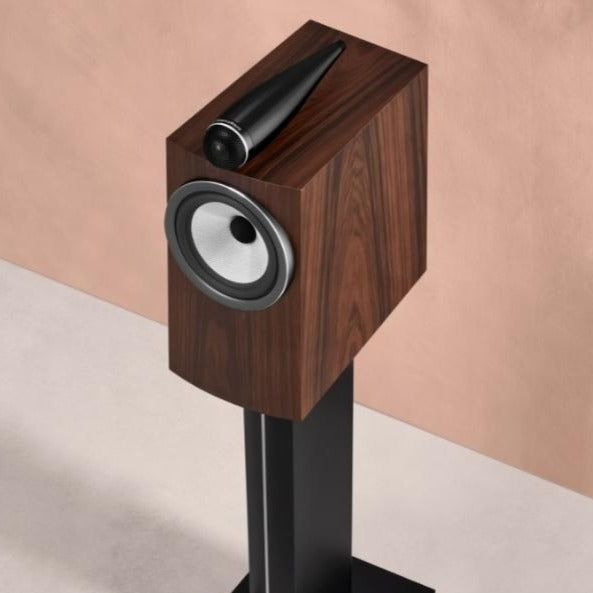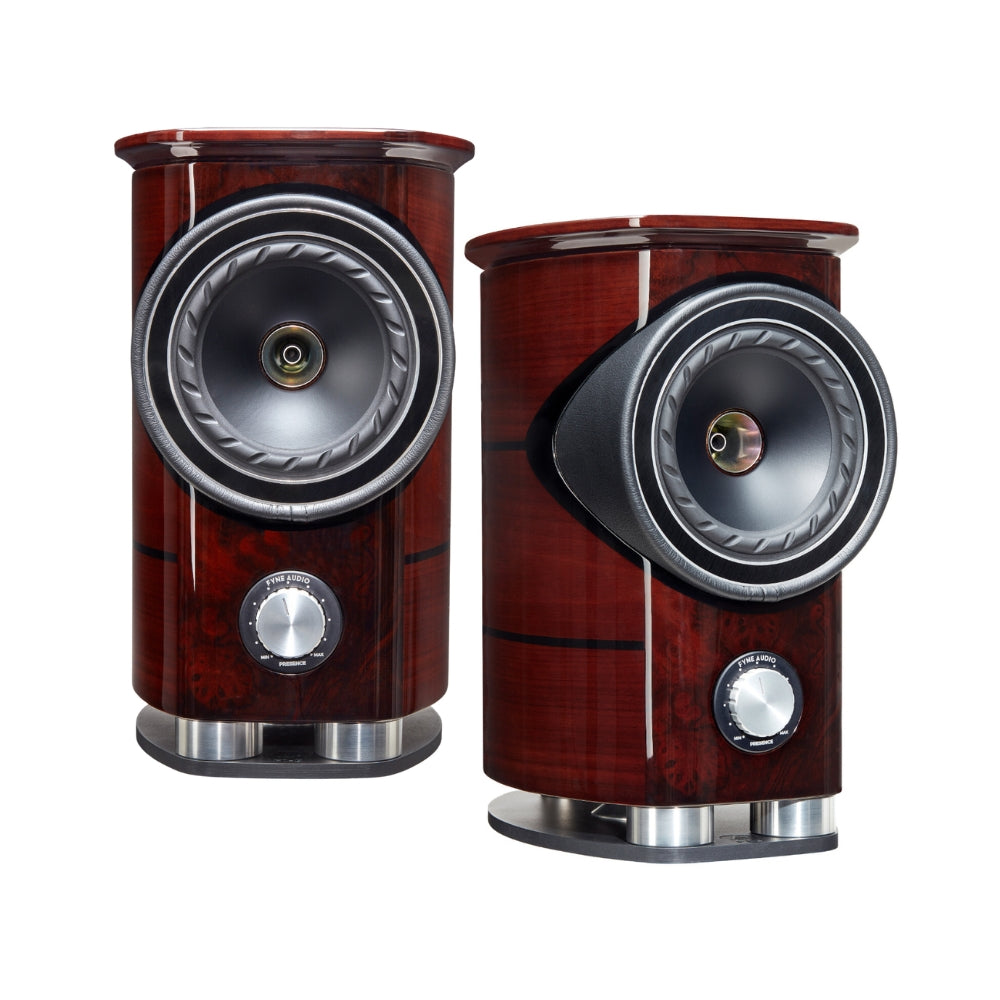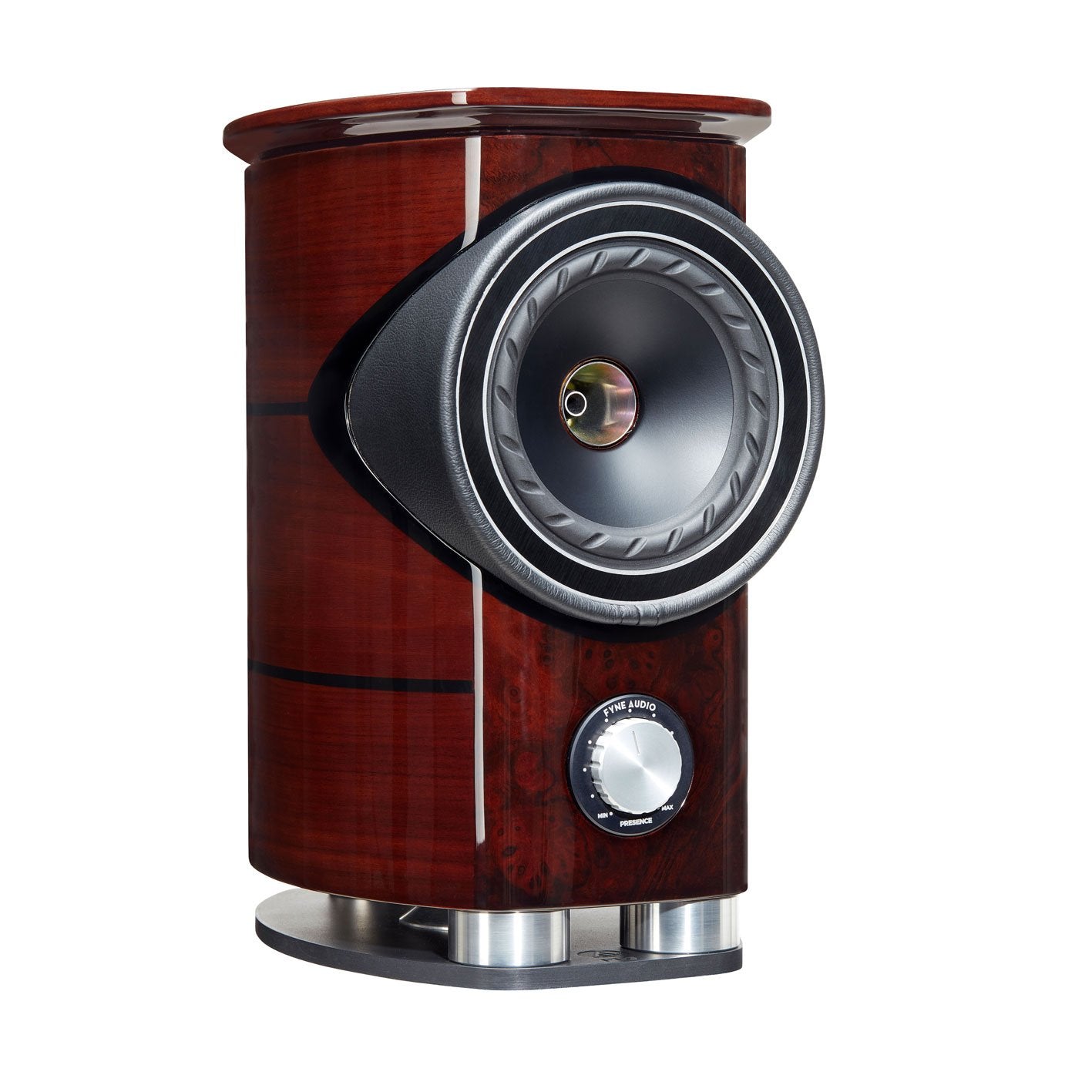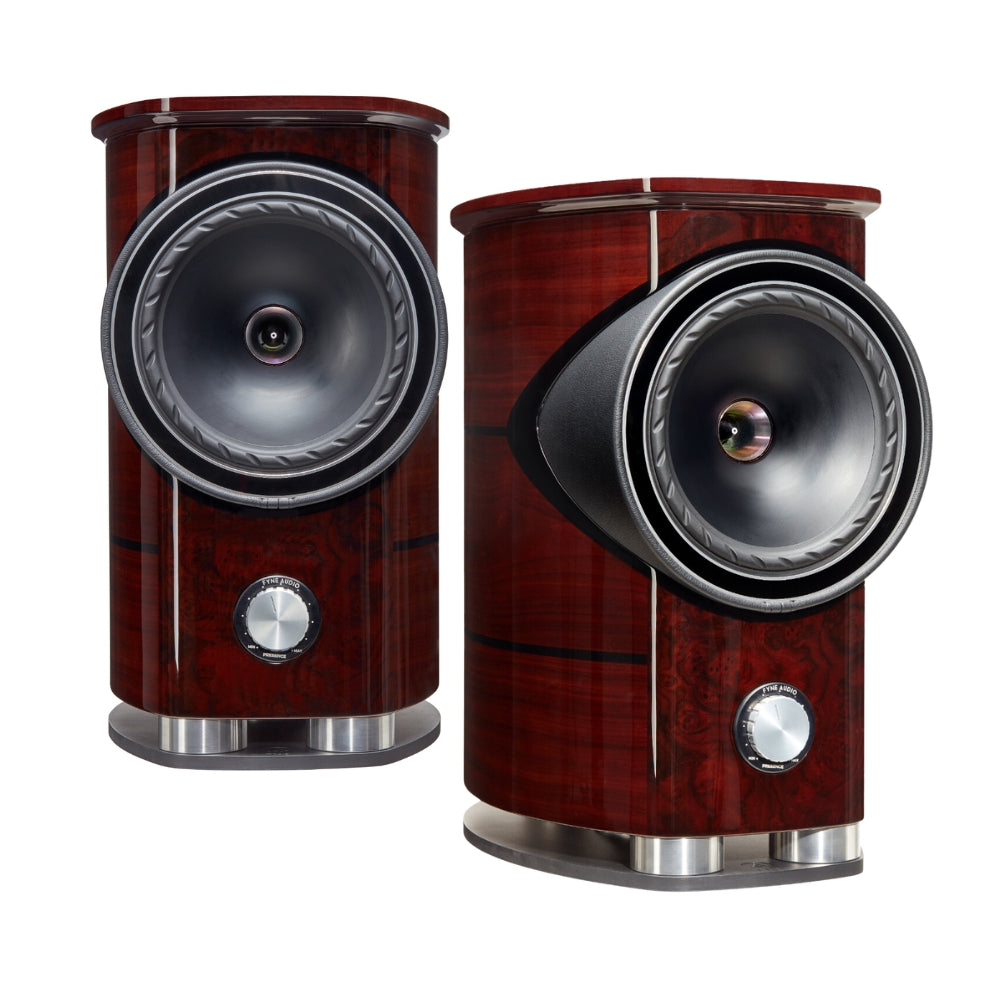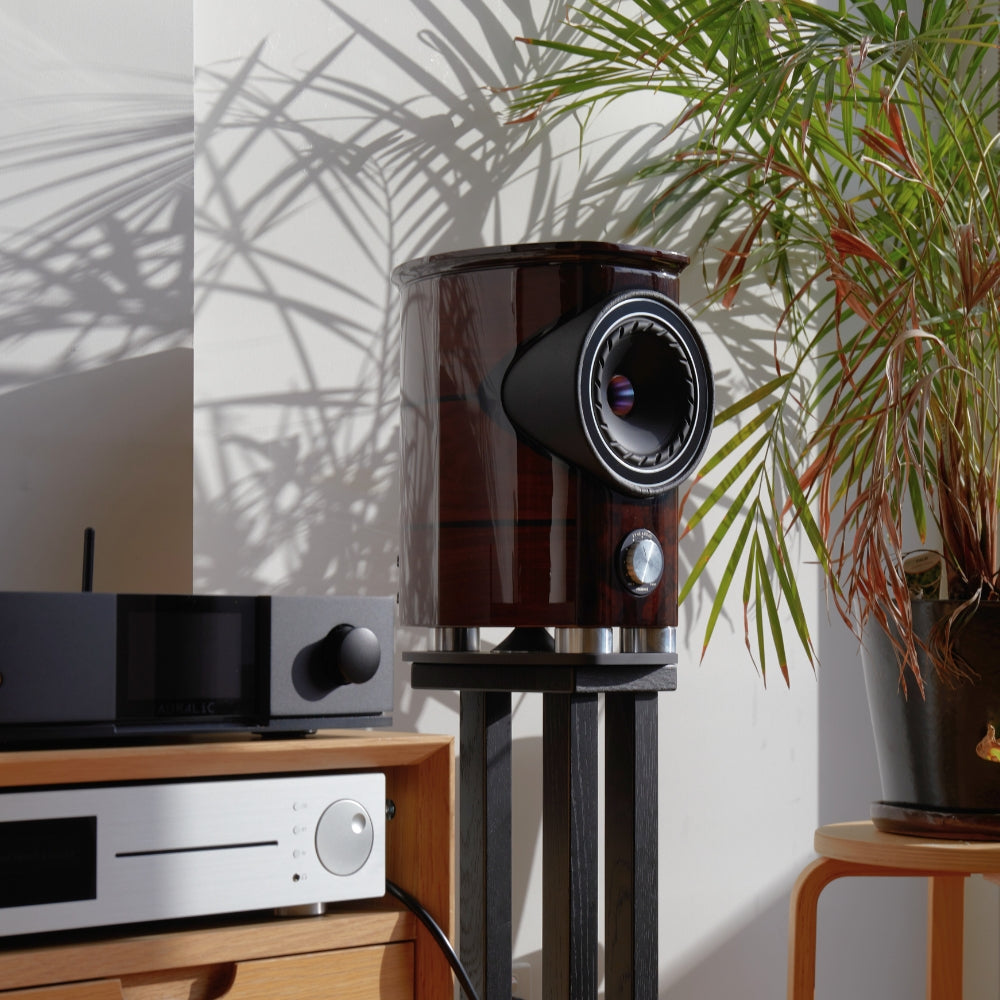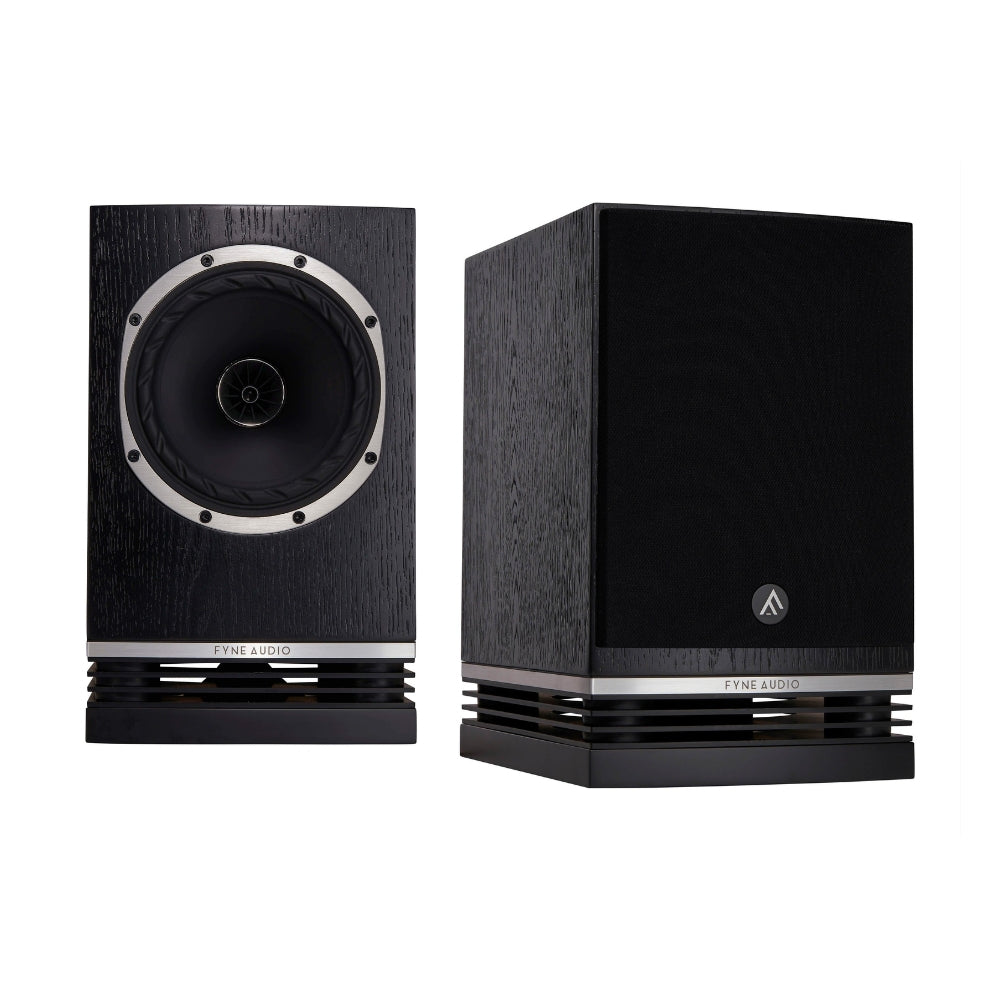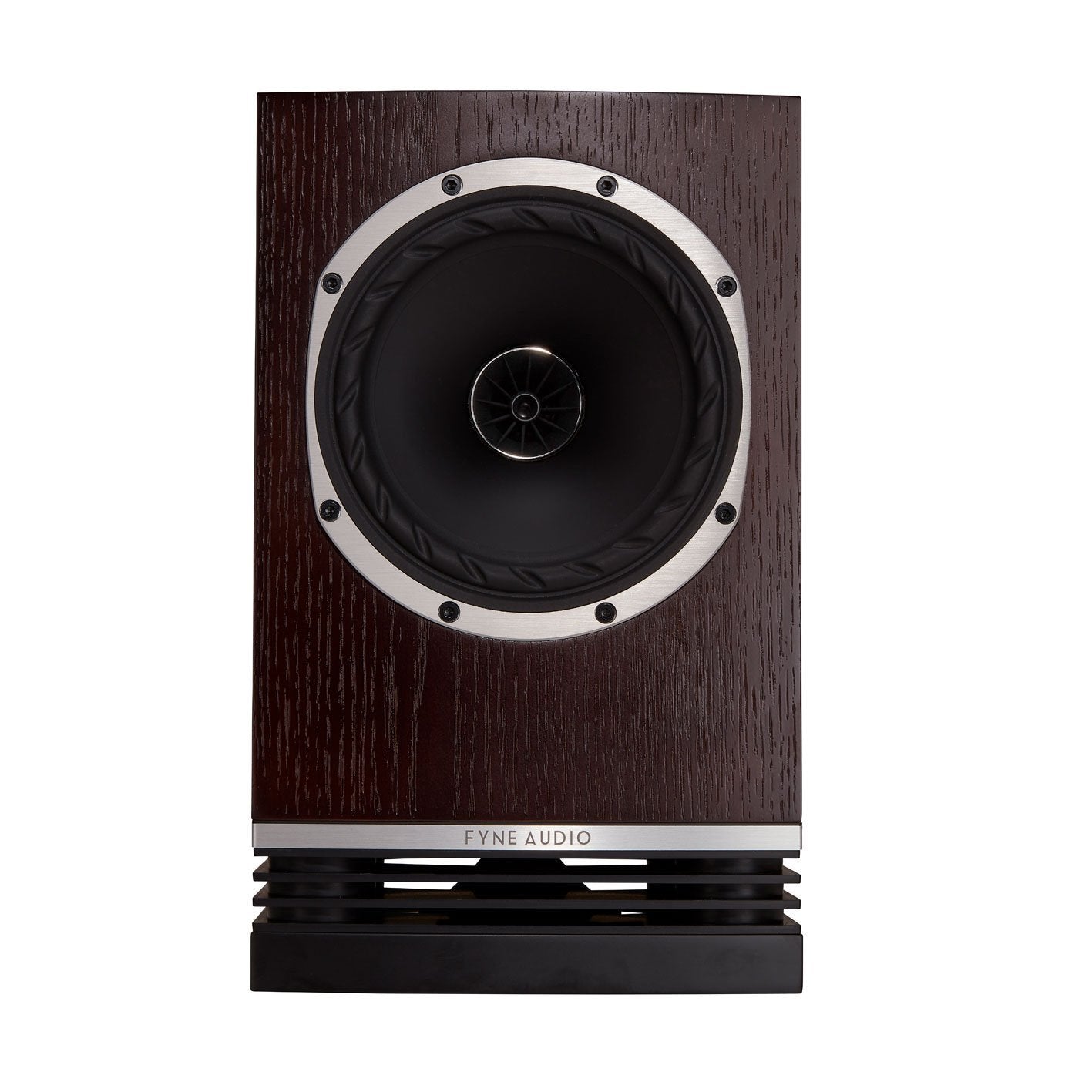
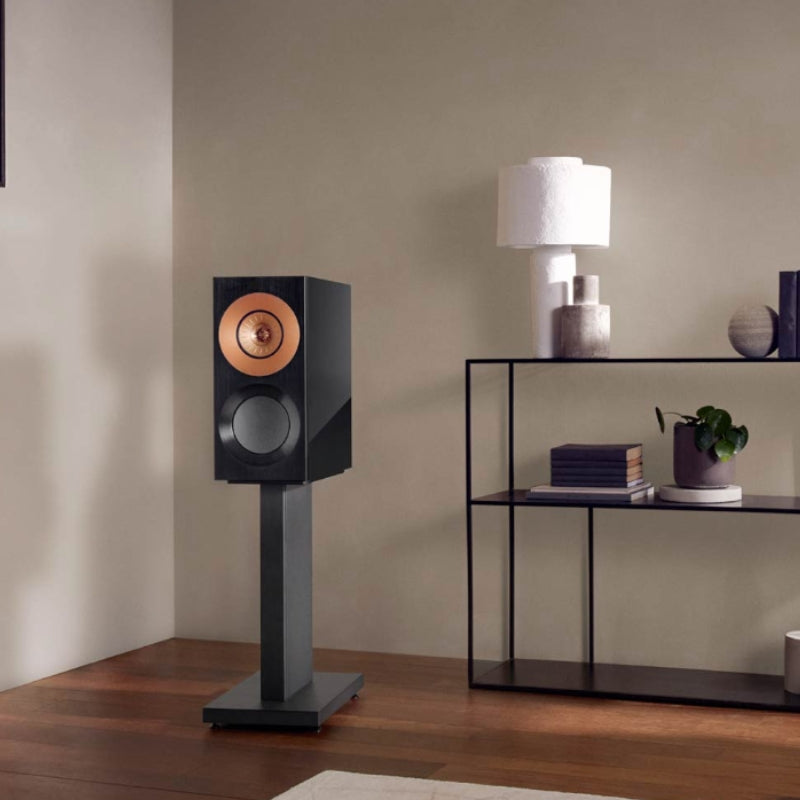
Bookshelf Speakers
Filters
57 products
TELL ME MORE ABOUT
Bookshelf Speakers
Bookshelf speakers offer a perfect combination of high-quality sound and compact design, making them a versatile choice for any audio setup. Ideal for enhancing your music listening or home theatre... Read More
Bookshelf speakers offer a perfect combination of high-quality sound and compact design, making them a versatile choice for any audio setup. Ideal for enhancing your music listening or home theatre experience, these speakers provide excellent sound clarity and depth without dominating your space. Their compact size allows them to fit seamlessly into various environments, from cozy apartments to dedicated listening rooms.
What Are Bookshelf Speakers?
Bookshelf speakers are a type of compact loudspeaker designed to be placed on a raised surface, such as a bookshelf, stand, or table, rather than on the floor. Despite their small size, they are engineered to deliver high-quality sound, making them an excellent choice for both music enthusiasts and home theatre setups. Typically, bookshelf speakers consist of a combination of drivers, including woofers for low frequencies and tweeters for high frequencies, housed in a compact enclosure.
One of the key benefits of bookshelf speakers is their versatility. They can be used in a variety of settings and configurations, from stereo pairs for music listening to part of a surround sound system for movies and TV. Their size makes them ideal for smaller spaces where floor-standing speakers might be impractical, but they are equally capable of delivering impressive sound in larger rooms when properly positioned.
Bookshelf speakers are often favoured for their ability to provide a balanced and detailed audio experience. They are designed to produce clear mids and highs, with sufficient bass response to satisfy most listeners. For those seeking deeper bass, they can be paired with a subwoofer to create a fuller sound. Overall, bookshelf speakers offer a perfect blend of performance, convenience, and aesthetics, making them a popular choice for a wide range of audio applications.
How to Choose the Best Bookshelf Speakers for Your Needs
Selecting the right bookshelf speakers for your needs involves considering several key factors to ensure you get the best audio experience. Here are some tips to help you make an informed decision:
1. Room Size and Acoustics: Consider the size of the room where you’ll be using the speakers. Larger rooms may require more powerful speakers to fill the space with sound, while smaller rooms can benefit from more compact models. Additionally, room acoustics, such as the presence of carpets, curtains, and furniture, can affect the sound quality of your audio system.
2. Audio Quality: Pay attention to the frequency response range, sensitivity, and impedance of the speakers. A wider frequency response range means the speaker can reproduce more detailed sounds. Higher sensitivity indicates better efficiency in converting power into sound, and matching impedance with your amplifier or receiver ensures optimal performance.
3. Purpose and Usage: Determine how you plan to use the speakers. If you’re primarily listening to music, look for speakers with accurate sound reproduction and a good balance between bass, midrange, and treble. For home theatre use, consider speakers that excel in delivering clear dialogue and dynamic sound effects.
4. Placement and Size: Ensure the speakers fit comfortably in your intended location. Bookshelf speakers come in various sizes, so measure your available space to avoid overcrowding. Proper placement, such as ear-level positioning and avoiding corners, can enhance audio performance.
5. Budget: Set a budget and compare options within that range. While higher-priced models often offer superior sound quality and features, there are excellent options available at various price points to suit different budgets. Take a quick look at our best bookshelf speakers at any budget if you want to compare some key brands and models.
By taking these factors into account, you can find the bookshelf speakers that best match your preferences and listening environment, ensuring an enjoyable audio experience tailored to your needs.
What Are the Key Differences Between Different Types of Bookshelf Speakers?
Bookshelf speakers vary mainly in driver configuration, size, and design. Some have two-way designs with a woofer and tweeter, offering balanced sound, while three-way models add a midrange driver for enhanced clarity. Size affects sound output, with larger speakers generally providing more bass. Material and build quality also differ, influencing durability and acoustic performance. Additionally, some models include features like built-in amplifiers (active speakers) or wireless connectivity, adding convenience and flexibility. Understanding these differences helps in selecting the right bookshelf speakers to match your specific audio needs and preferences.
Final Thoughts
Choosing the right bookshelf speakers can significantly enhance your audio experience, providing clear, balanced sound in a compact and versatile package. By considering factors like room size, audio quality, intended usage, placement, and budget, you can find speakers that perfectly match your needs. Whether for music, movies, or general listening, the right bookshelf speakers can transform your space into an auditory haven.
And of course, if you really aren't sure where to start or just want to clarify a few things, you can also have a chat with our team here. We would love to help you find the right speakers for your space.
Some Quick FAQ:
1. Can bookshelf speakers be used as part of a home theatre system?
Yes, bookshelf speakers are versatile and can be integrated into a home theatre system as front, rear, or surround speakers, providing clear and dynamic audio for an immersive viewing experience.
2. Do bookshelf speakers need a separate amplifier?
Most bookshelf speakers require an external amplifier or receiver to power them, although there are active models with built-in amplifiers that only need a power source and an audio signal.
3. How should bookshelf speakers be positioned for optimal sound?
Place bookshelf speakers at ear level when seated, ideally on stands or sturdy shelves, and ensure they are at least a few inches away from walls to reduce unwanted reflections and enhance sound quality.
4. Can I connect bookshelf speakers to my computer or mobile device?
Yes, you can connect bookshelf speakers to a computer or mobile device using an appropriate amplifier or receiver, and some active models offer direct connections via Bluetooth, USB, or auxiliary inputs.
NEED MORE GUIDANCE?
We are here to help
Check out some of our most commonly asked questions.
What do I need to play records?
Getting into vinyl? That’s awesome! We have some curated turntable Hi-Fi packs, with everything you'll need to get spinning right away. But if you want to build your own, read on for all the details.
First off, you'll need a turntable. It's the star of the show, so make sure it’s in good nick, with a decent cartridge and stylus (needle).
Next, there’s the phono preamp. Some turntables or amplifiers come with one built-in, but if yours doesn’t, you’ll need one as a bridge between your turntable and amplifier or powered speakers.
For the sound output, you’ve got two options. You can go with a traditional setup involving an integrated amplifier to take the signal from your phono preamp and power your passive speakers. Alternatively, you can opt for powered speakers, which have the amplifier built in – a handy all-in-one solution.
Speaking of speakers, good ones are a must for that rich, warm vinyl sound we all love. Whether you go for bookshelf or floorstanding speakers (or powered ones) depends on your space and budget.
And there you go! With these essentials, you’ll be ready to dive into your vinyl collection and enjoy that classic sound.
What can a wireless speaker do?
Wireless speakers are a game-changer for how you enjoy music and audio around the house. First off, they let you stream music wirelessly from your phone, tablet, or computer, so no more messing about with cables. You can easily play tunes from Spotify, Apple Music, Tidal or whatever streaming service you fancy.
If you’re into having music everywhere, many wireless speakers offer multi-room audio. You can sync them up to play the same music in every room or control what plays in each room individually, perfect for parties or just keeping the vibes consistent throughout your home.
Voice control is another brilliant feature. Many come with built-in assistants like Alexa, Google Assistant, or Siri. You can control your music with just your voice, ask for the weather, set reminders, or even control other smart home devices.
Sound quality? These little gadgets often pack a punch, delivering high-quality audio that can rival traditional wired setups. Some even offer 360-degree sound, filling the room with music from every angle.
In a nutshell, wireless speakers bring flexibility, convenience, and top-notch sound to your audio experience, making them a fantastic addition to any home. Whether you’re hosting a party, working from home, or just chilling out, they make listening to music a breeze.
How do you choose the right speaker & amplifier combination?
Deciding on a good speaker and amplifier combination is like putting together a perfect wine and cheese pairing—it’s all about balance and harmony. Here’s a conversational guide to help you through it:
First, consider your speakers. These are your main players, so you want to choose ones that fit your space and listening preferences. If you love deep bass and have a bit of room, floorstanding speakers might be your go-to. For smaller spaces or a more subtle look, bookshelf speakers are fantastic.
Now, onto the amplifier. This is where things get interesting. Your amp needs to match your speakers in terms of power and impedance. Check the wattage ratings on your speakers—your amplifier should provide enough power to drive them properly. Too little power and you’ll be missing out on sound quality; too much, and you risk damaging your speakers.
Next, think about the impedance (measured in ohms). Your amp and speakers should be compatible here too. Most speakers are rated at 8 ohms, but some can be 4 or 6. Make sure your amplifier can handle the impedance of your speakers to avoid any performance issues.
Another important factor is the type of sound you’re after. Some amps are known for their warm, rich tones, while others might be more neutral or even slightly bright. It’s a bit like choosing between a vinyl record and a digital stream or CD —each has its own charm. If possible, listen to different amp and speaker combinations to see what sounds best to your ears.
If purchasing online, note that at LE, we have made recommendations on speaker & amplifier combinations that we think sound wonderful together within each product listing.
Don’t forget about connectivity and features. Modern amplifiers often come with a host of options like Bluetooth, Wi-Fi streaming, and various inputs for all your devices. Make sure your amp has the inputs you need for your turntable, CD player, or streaming device.
Finally, consider your budget. Great sound doesn’t always mean breaking the bank, but be prepared to invest to get a quality setup that will last.
In the end, trust your ears. Listen to a few combinations if you can, and go with what makes your music sound the best to you.
Why do I need a headphone amplifier?
If you’re diving into the world of high-quality audio, a headphone amplifier can be a real game-changer. Think of it like this: most standard devices, like your smartphone or laptop, just don’t have the oomph needed to drive headphones properly. They might get the job done, but they won’t do your music justice. A headphone amp gives your headphones the power they need, ensuring you get the volume and clarity that really makes your music shine.
It’s not just about making things louder, either. A good headphone amp can significantly improve sound quality. You’ll get clearer highs, richer mids, and tighter bass, making your favourite tracks sound even better. You might notice details you’ve never heard before, especially if you’re listening to high-resolution audio files.
Premium headphones often have higher impedance, meaning they require more power than your typical audio source can provide. A headphone amp can handle this with ease, making sure your headphones perform at their absolute best. Plus, many amps come with extra features like bass boost, equalisation, and gain control, giving you more ways to tweak the sound to your liking.
In short, if you’re passionate about your music and want to hear it in the best possible way, a headphone amplifier is definitely worth considering. It’s all about unlocking the full potential of your gear and really getting the most out of your listening experience.
Where should I start when designing a home cinema?
Designing your own home cinema? That's awesome! We are here to help walk you through the process, but as a starting point, here’s what we would recommend and where to kick things off:
First up, pick your spot. For most people this is your existing lounge room, but if you have an underused garage, or spare bedroom, then you have an opportunity to create your very own true Home Cinema experience. Find a room that’s just right—not too cramped and ideally away from noisy areas. This sets the stage for that immersive movie experience.
Next, think about how you’ll set things up. Plan where your seats will go and where to place your projector screen for the best view from every angle. It’s all about creating that comfy, cinematic vibe.
Sound matters, too. Consider if you want a wireless system for simplicity or a full surround sound speaker system with AV receiver for that surround-sound thrill. Think about soundproofing or adding acoustic panels or thick carpets to really amp up the audio quality of the room.
Now, onto the screen. Decide between a crisp TV or a projector setup, depending on your room size and personal style. Maybe even throw in some dimmable lights or smart lighting to set the mood just right.
And hey, don’t forget comfort. Invest in plush cinema seating and think about the décor—whether it’s movie posters, blackout curtains, or popcorn machine & bar area, whatever gives you that true cinema feel.
Lastly, tech it up! Make sure everything—from your Blu-Ray player & Apple TV to your gaming consoles—is set to sync perfectly with your new setup.
With these steps, you’re on your way to creating a home cinema that’s not just a space, but an experience. Enjoy movie nights like never before!

